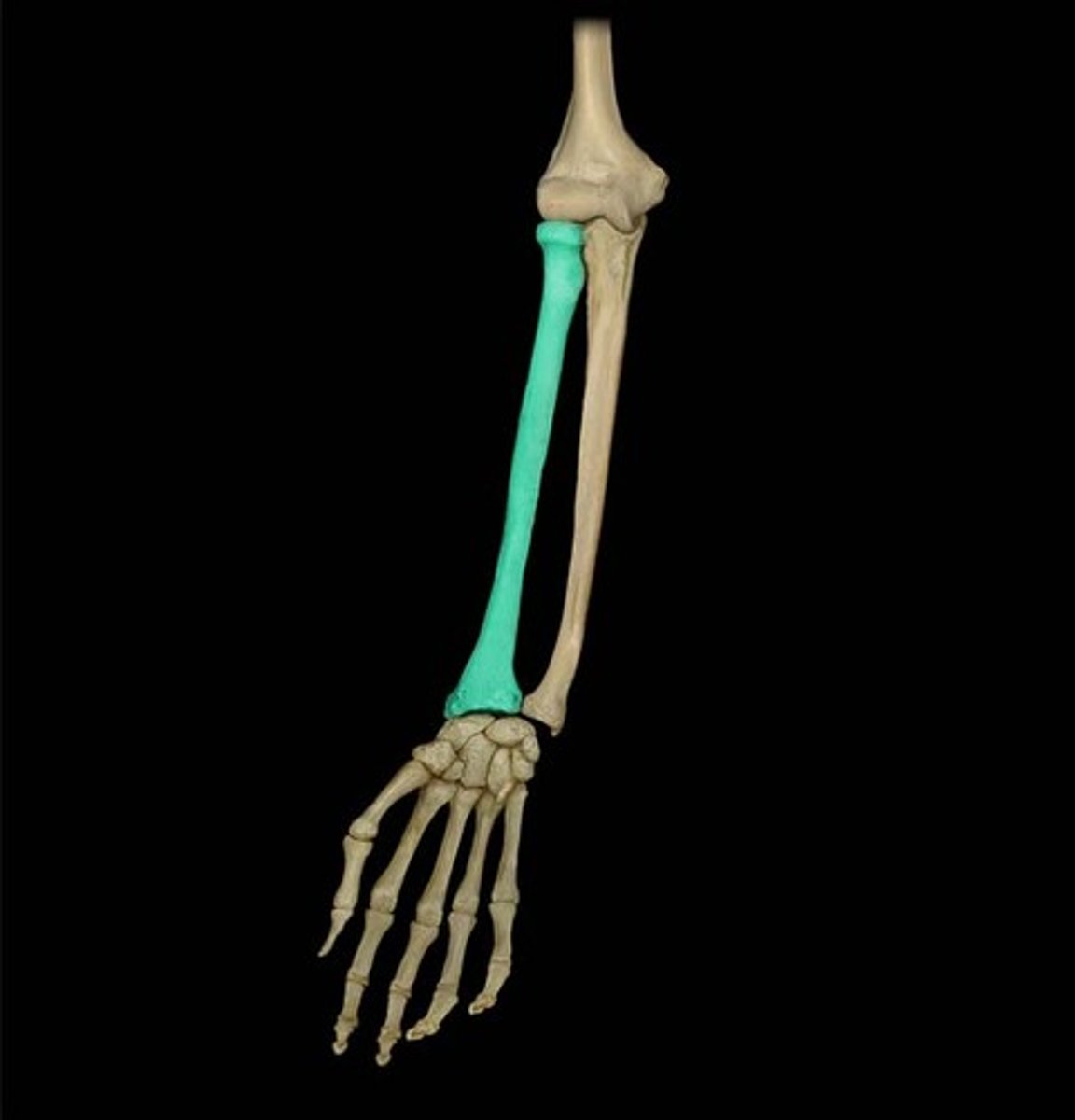ALL Bio 243 Bones (Names)
1/162
There's no tags or description
Looks like no tags are added yet.
Name | Mastery | Learn | Test | Matching | Spaced |
|---|
No study sessions yet.
163 Terms
frontal bone
What bone is this?

anterior part of the cranium that forms the forehead
What is the frontal bone?
Parietal bone
1. sagittal suture
2. coronal suture
3. squamous suture
What bone is this?
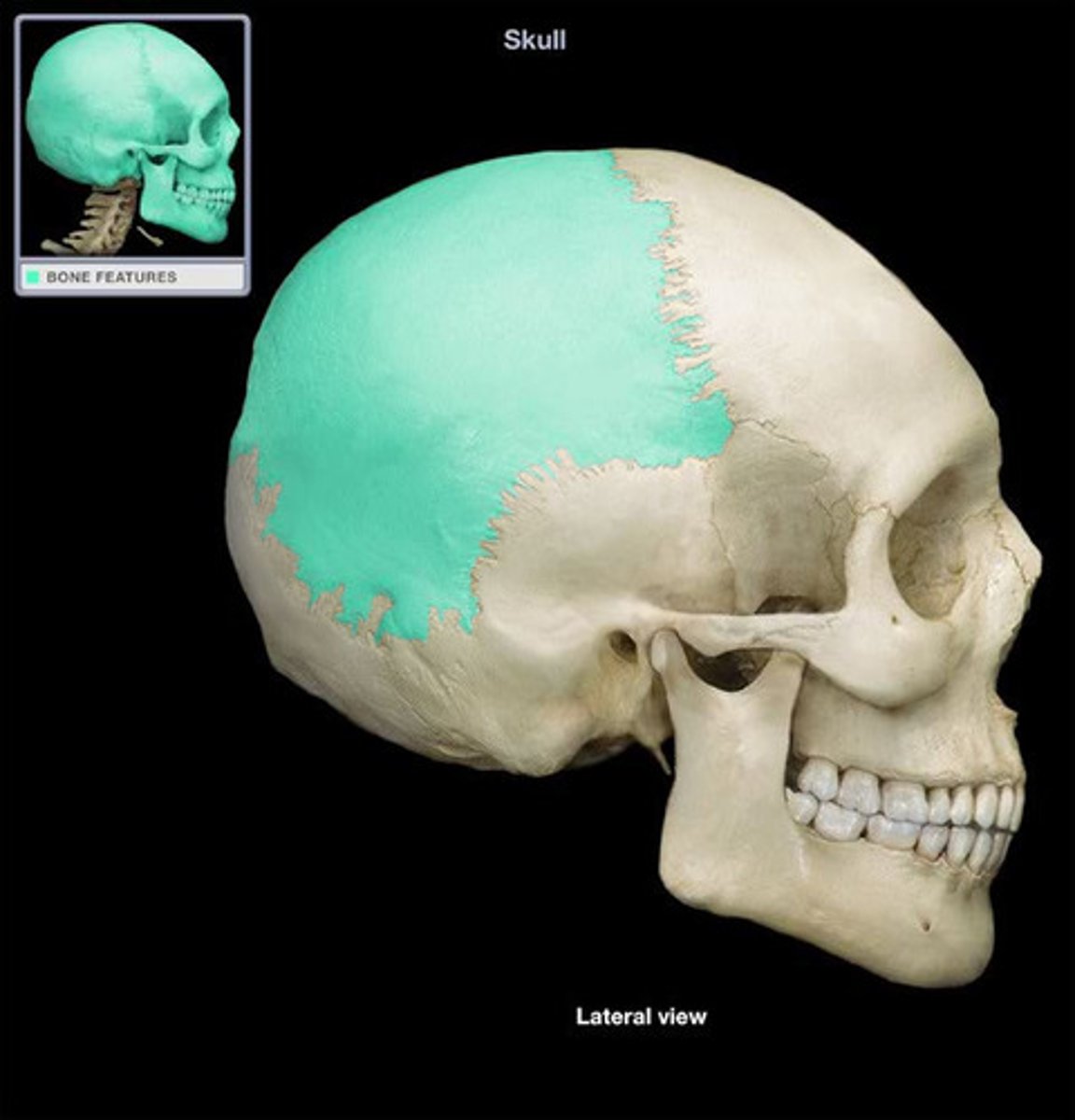
sagittal suture (parietal bone)
- the midline articulation between the two parietal bones
What feature is this?
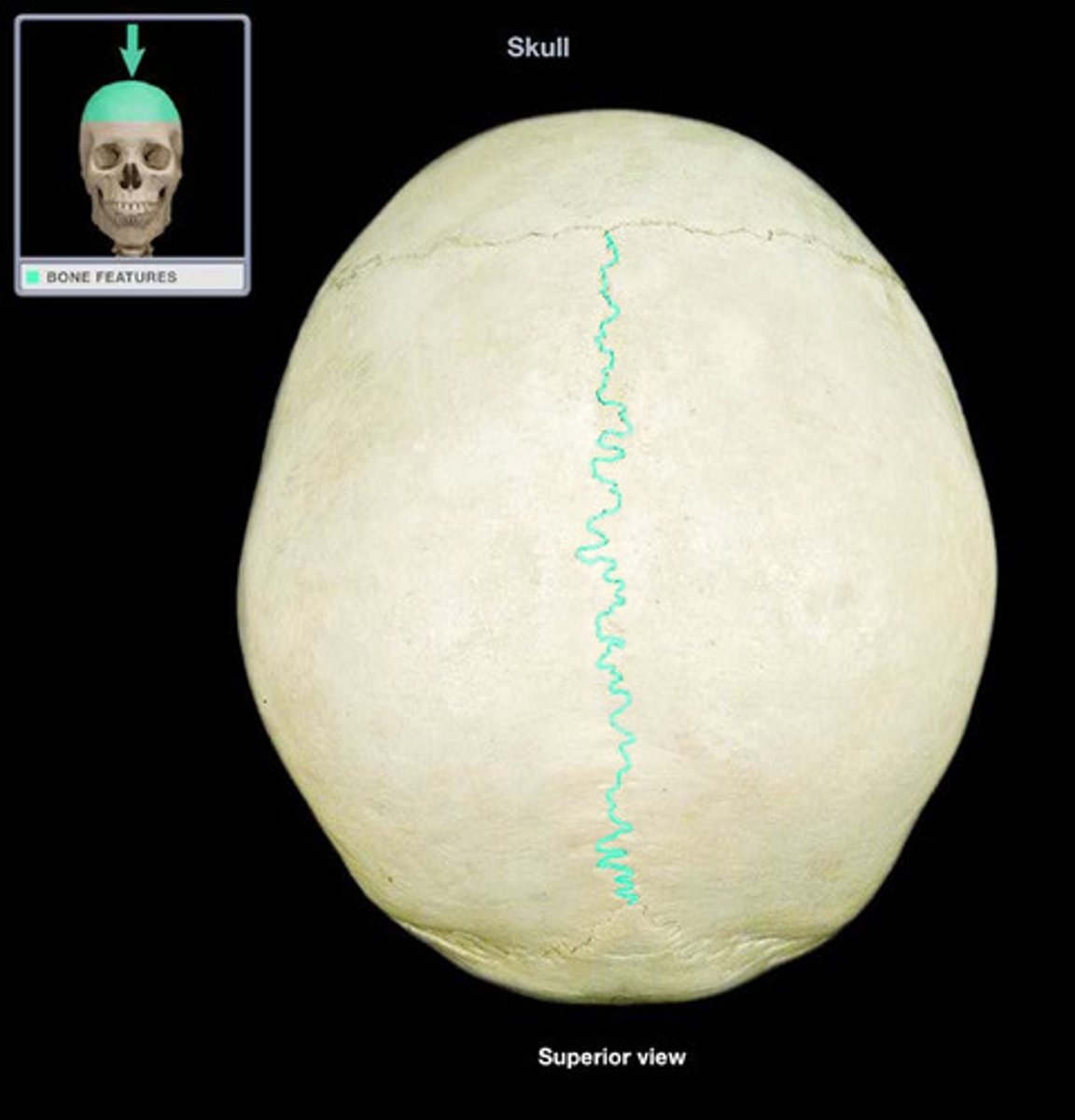
coronal suture (parietal bone)
- the articulation between the parietal bones and the frontal bone
What feature is this?
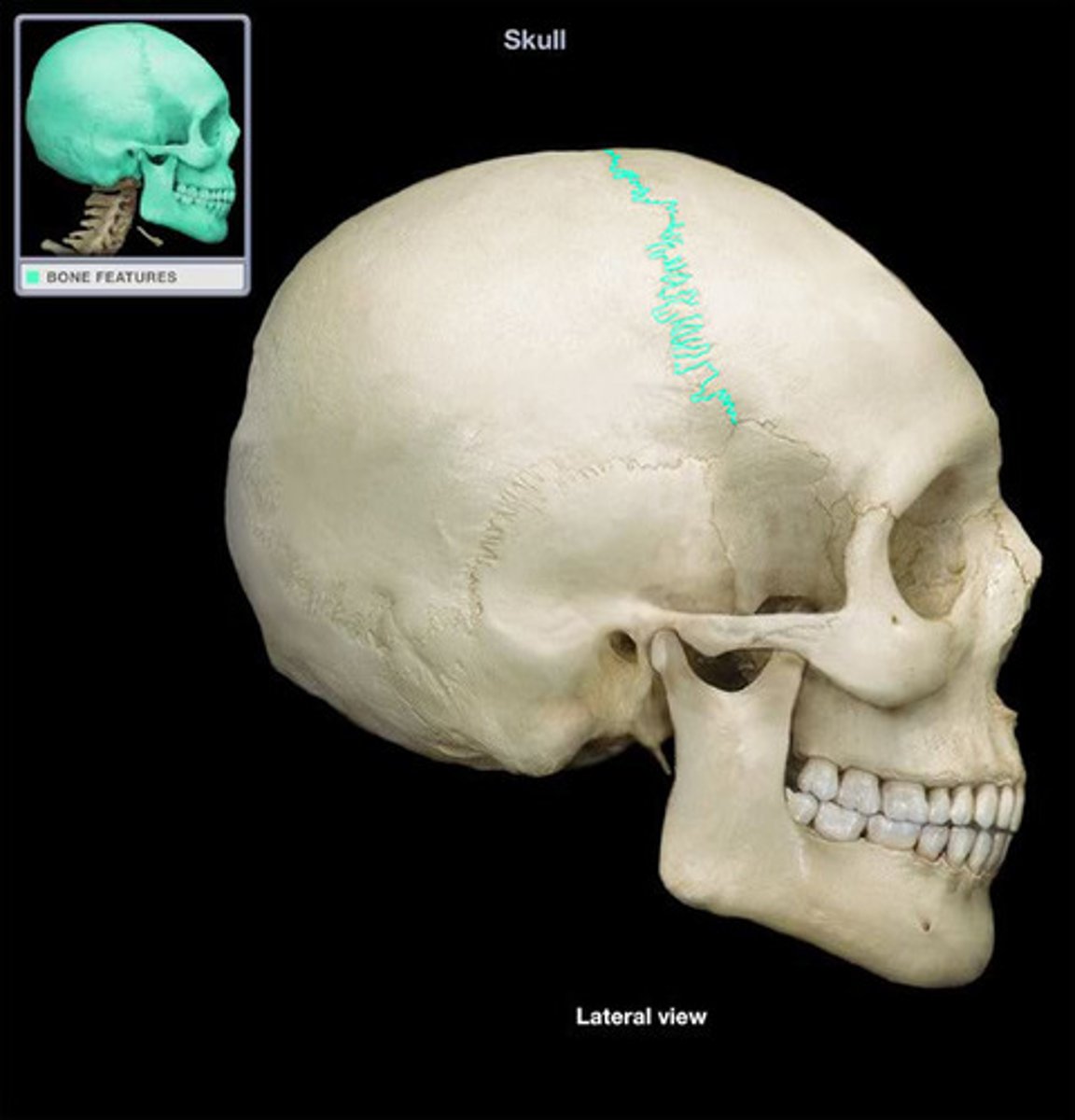
squamous suture (parietal bone)
- the articulation between the parietal bone and the temporal bone
What feature is this?
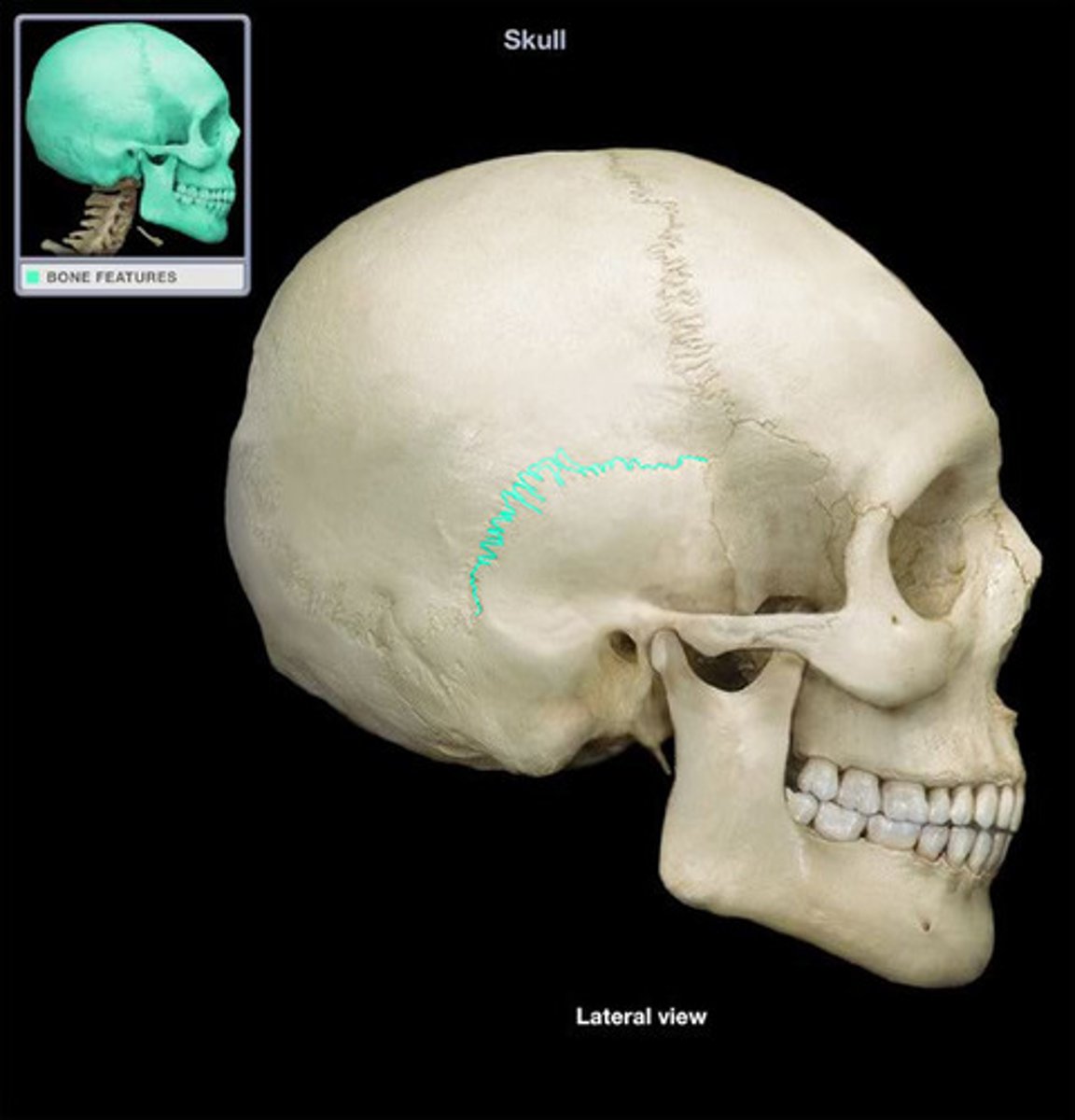
temporal bone
1. external acoustic meatus
2. styloid process
3. zygomatic process
4. mastoid process
What bone is this?
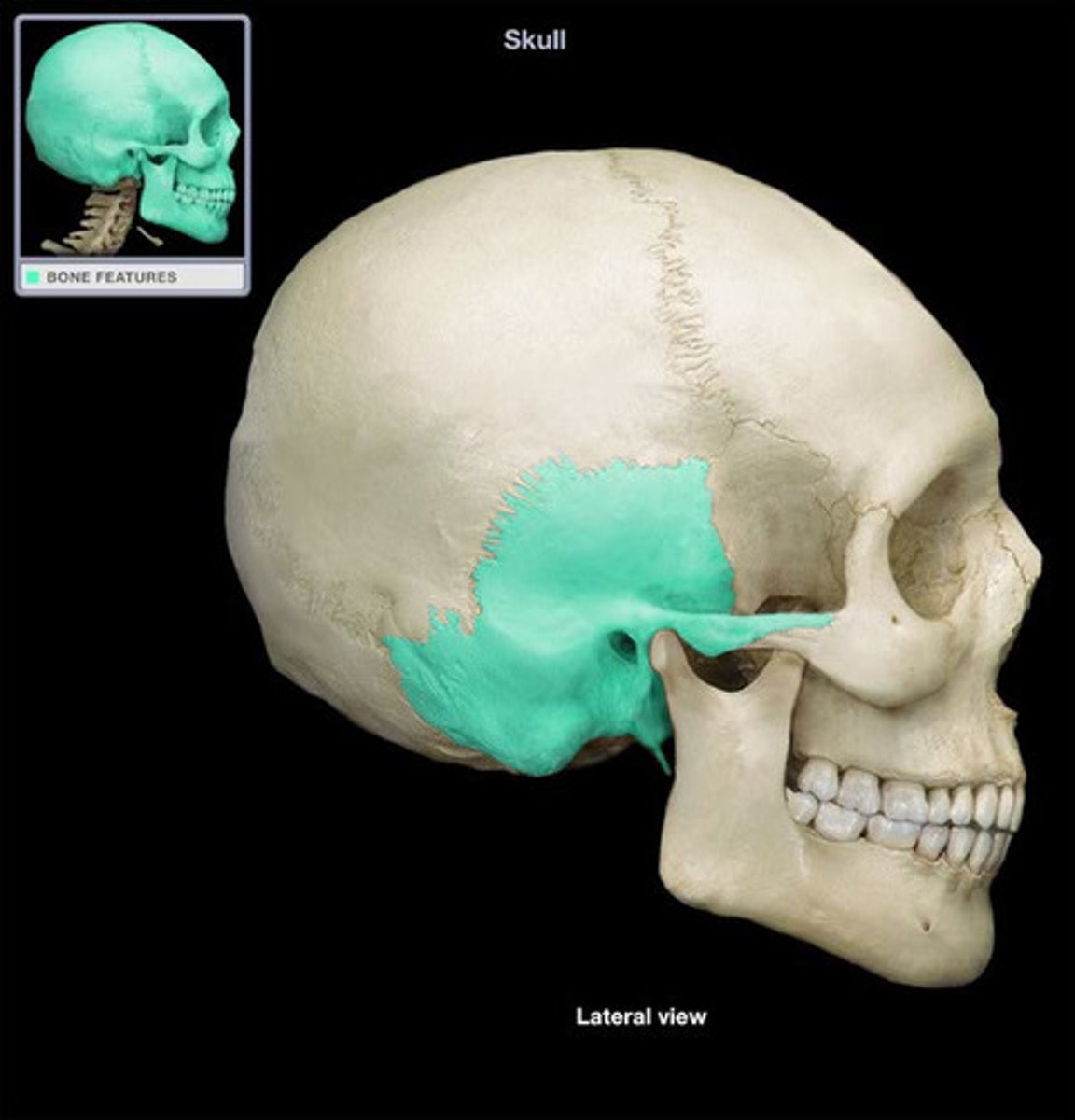
external acoustic meatus (temporal bone)
- forms the canal in the outer ear leading to the eardrum and the middle ear
What feature is this?
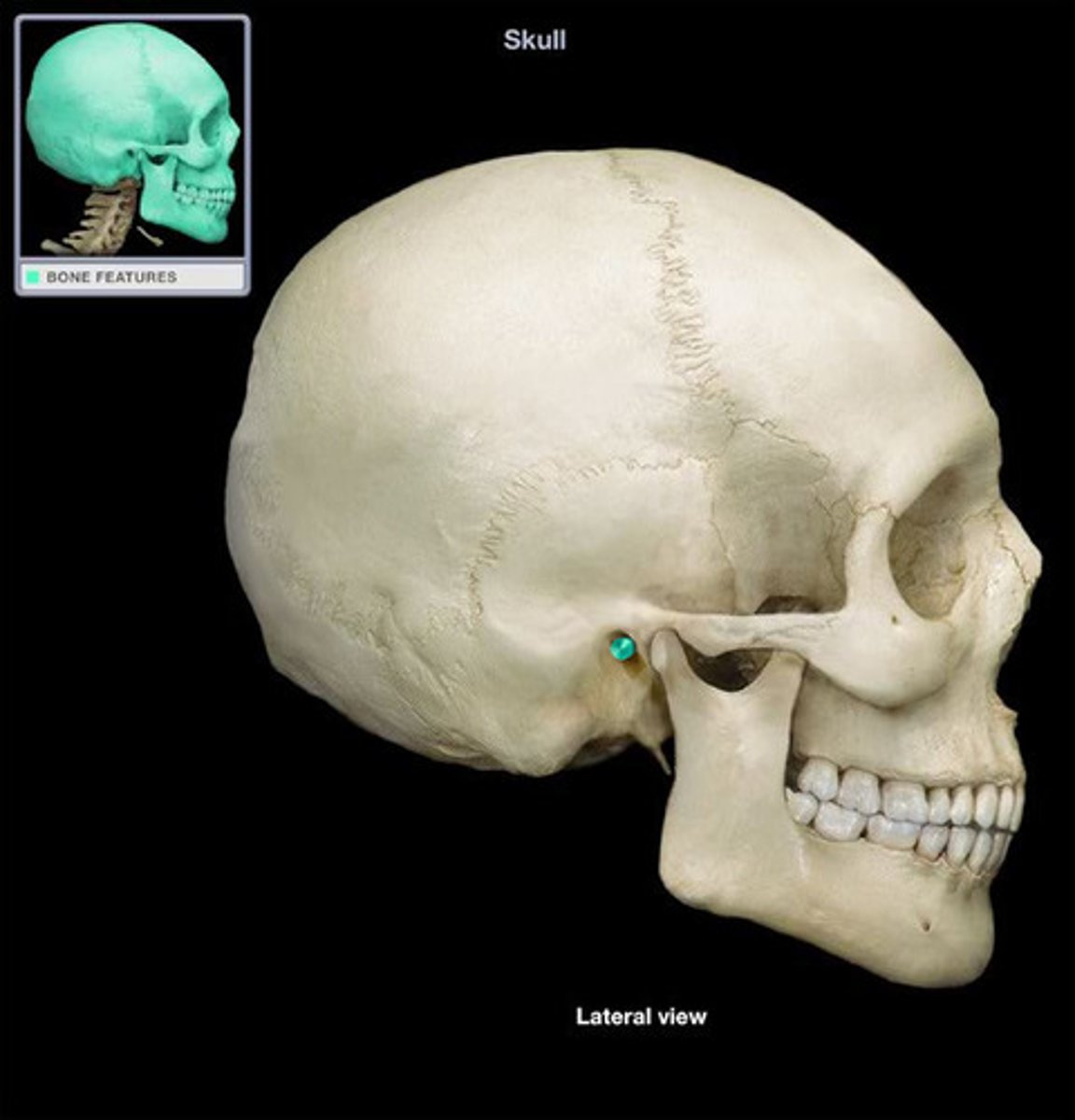
styloid process of the temporal bone
What feature is this?

zygomatic process (temporal bone)
What feature is this?
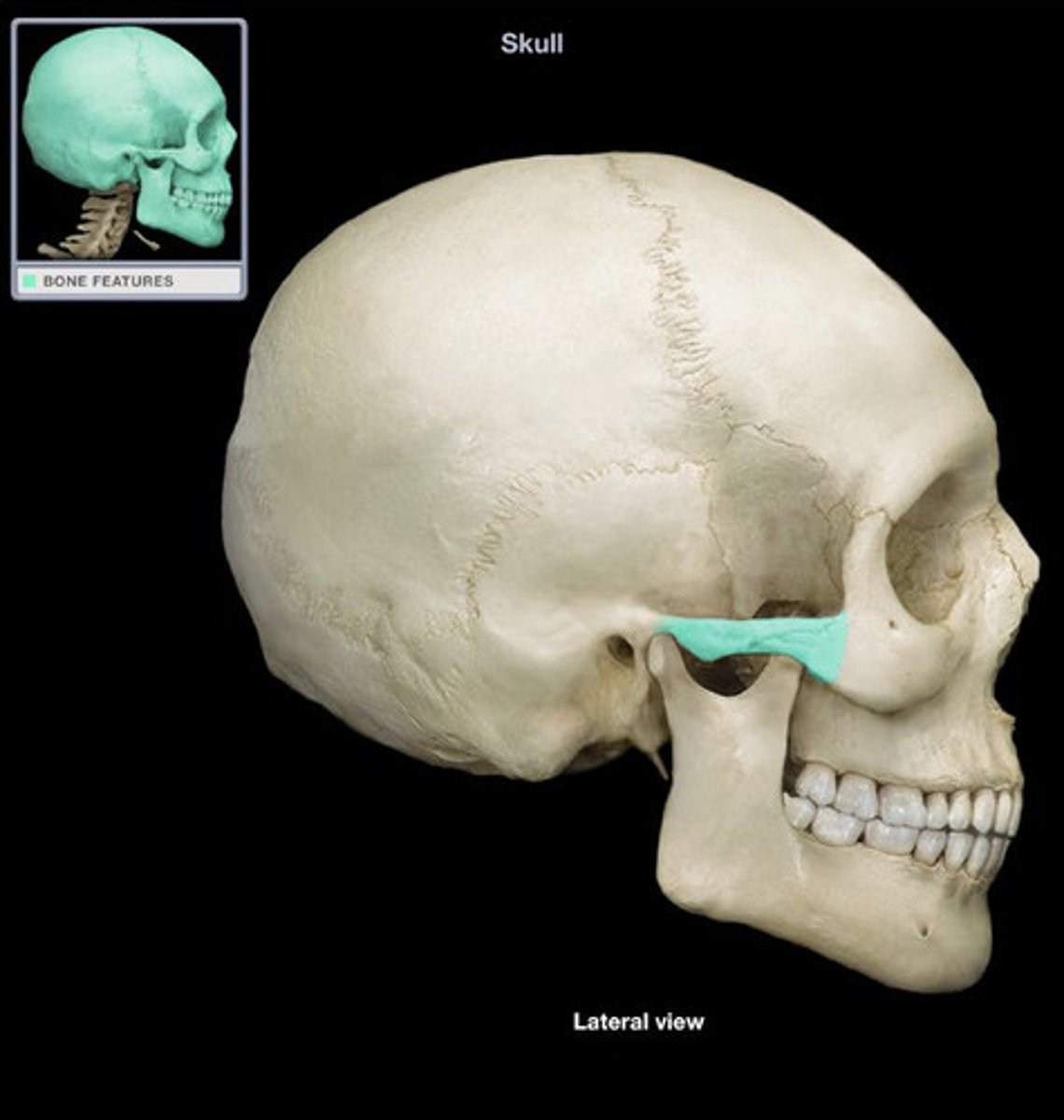
mastoid process on temporal bone
What feature is this?
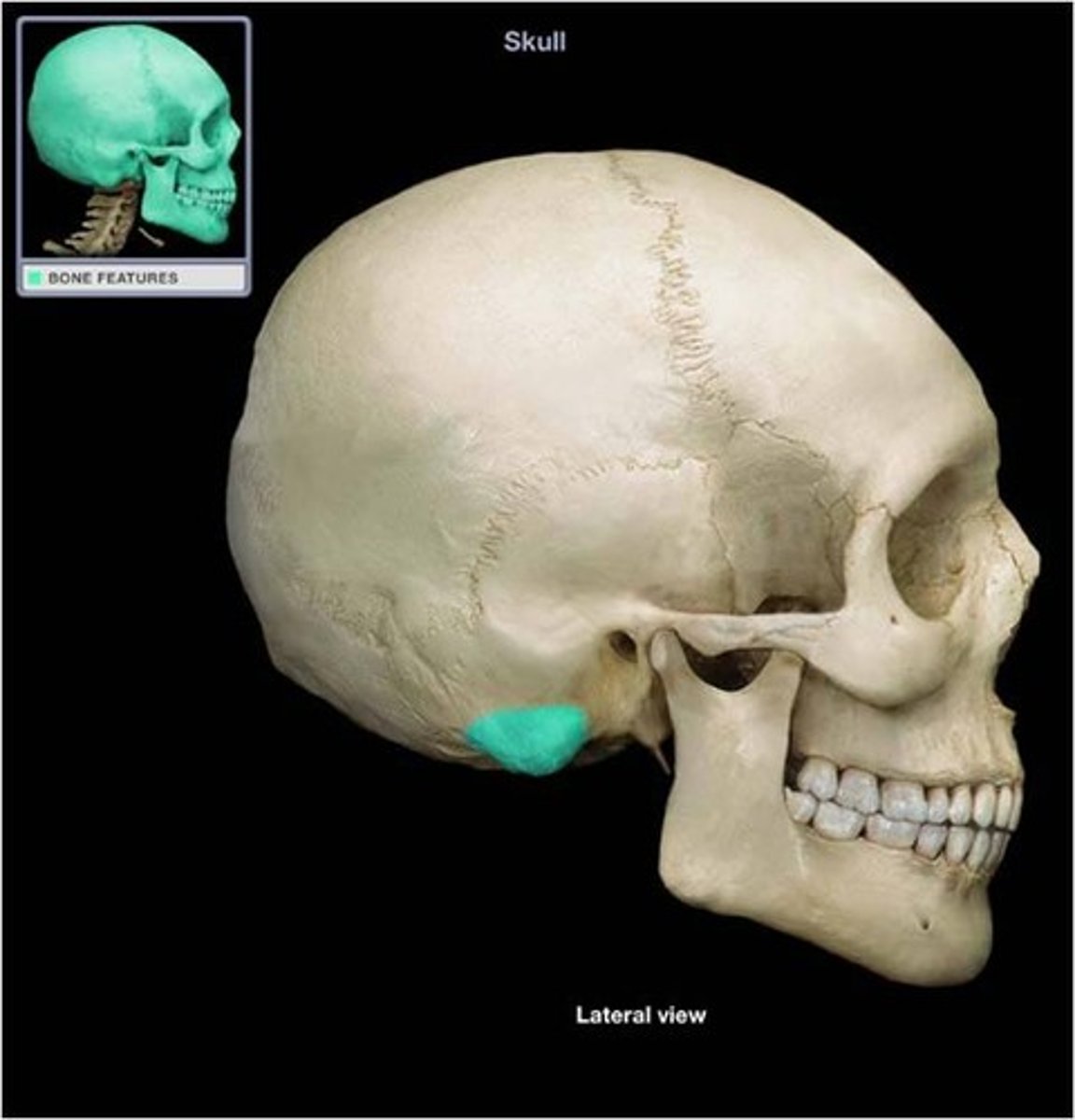
occipital bone
1. external occipital protuberance
2. lambdoid suture
3. occipitomastoid suture
4. foramen magnum
What bone is this?
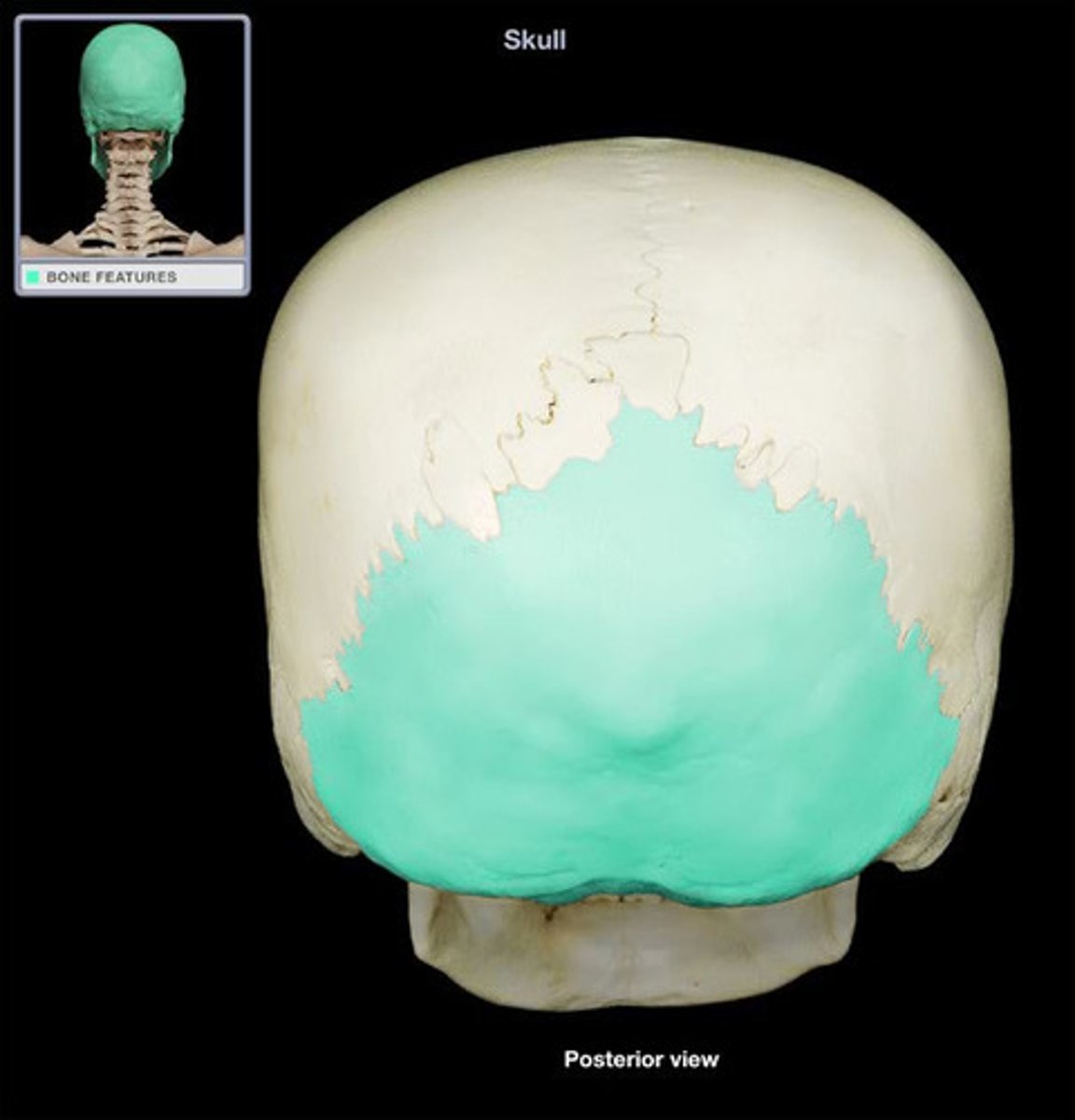
external occipital protuberance (occipital bone)
What feature is this?
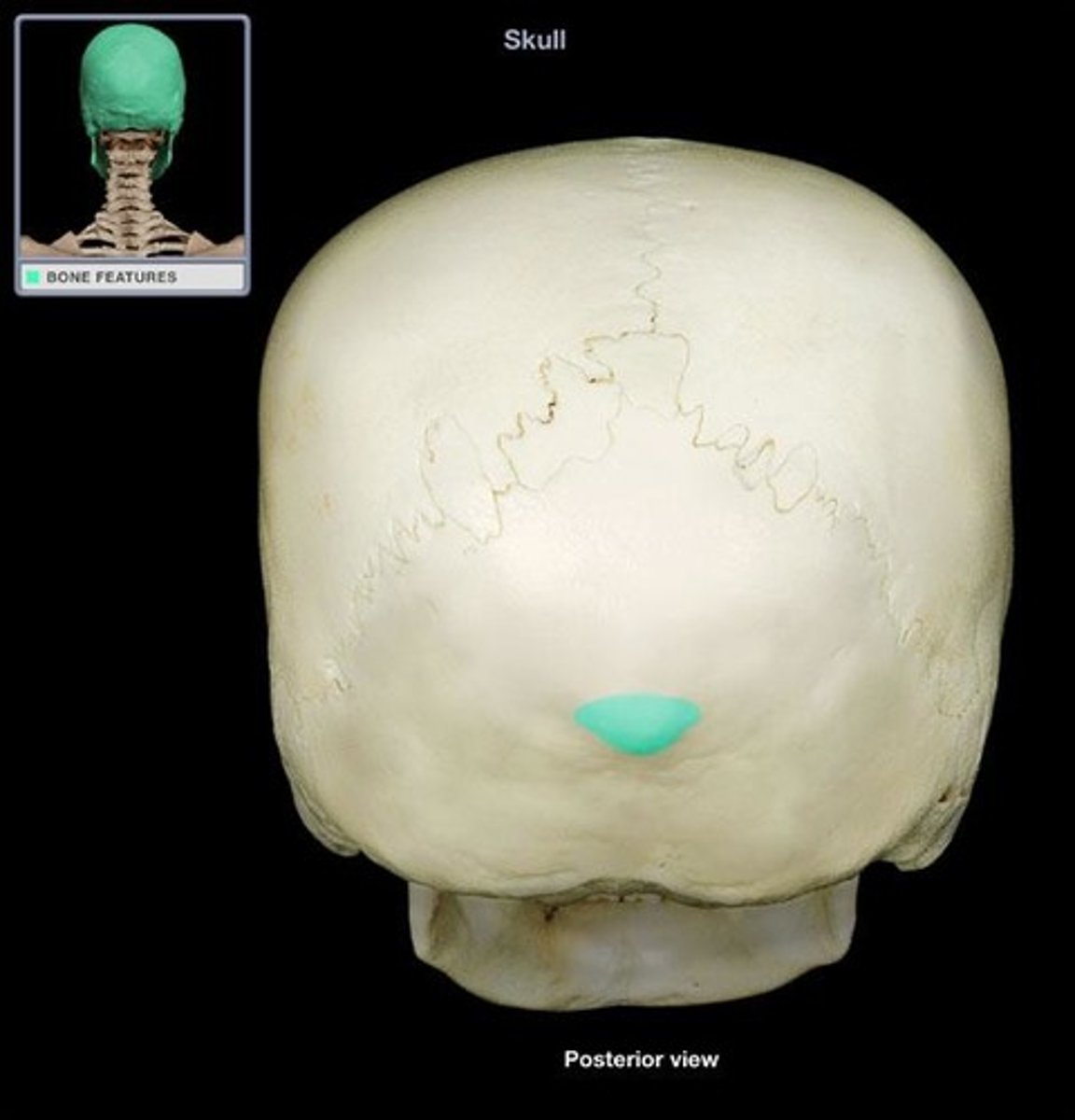
lambdoid suture (occipital bone)
- the articulation between the occipital bone and parietal bones
What feature is this?
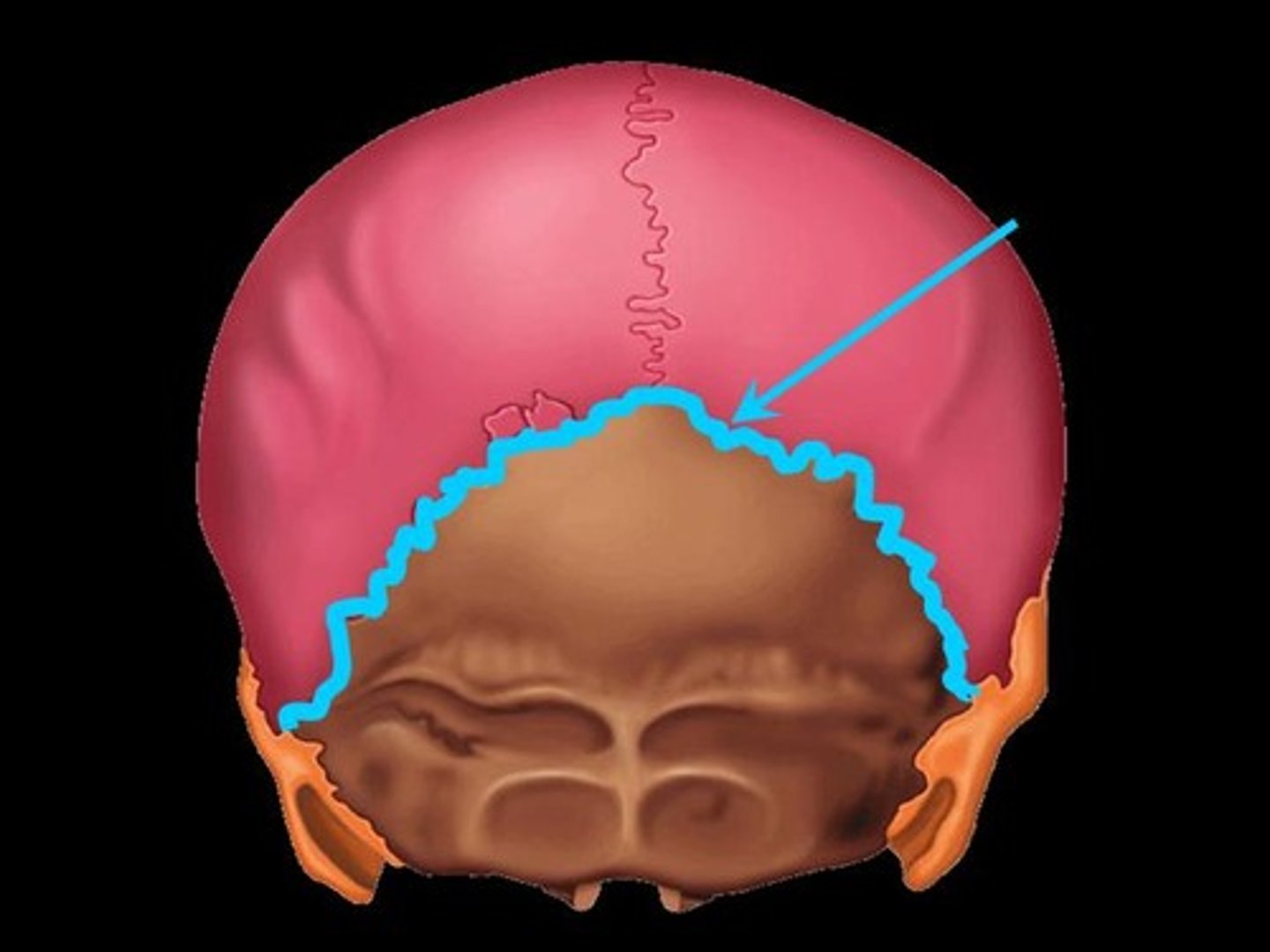
occipitomastoid suture (occipital bone)
- the suture between the occipital bone and temporal bone
What feature is this?
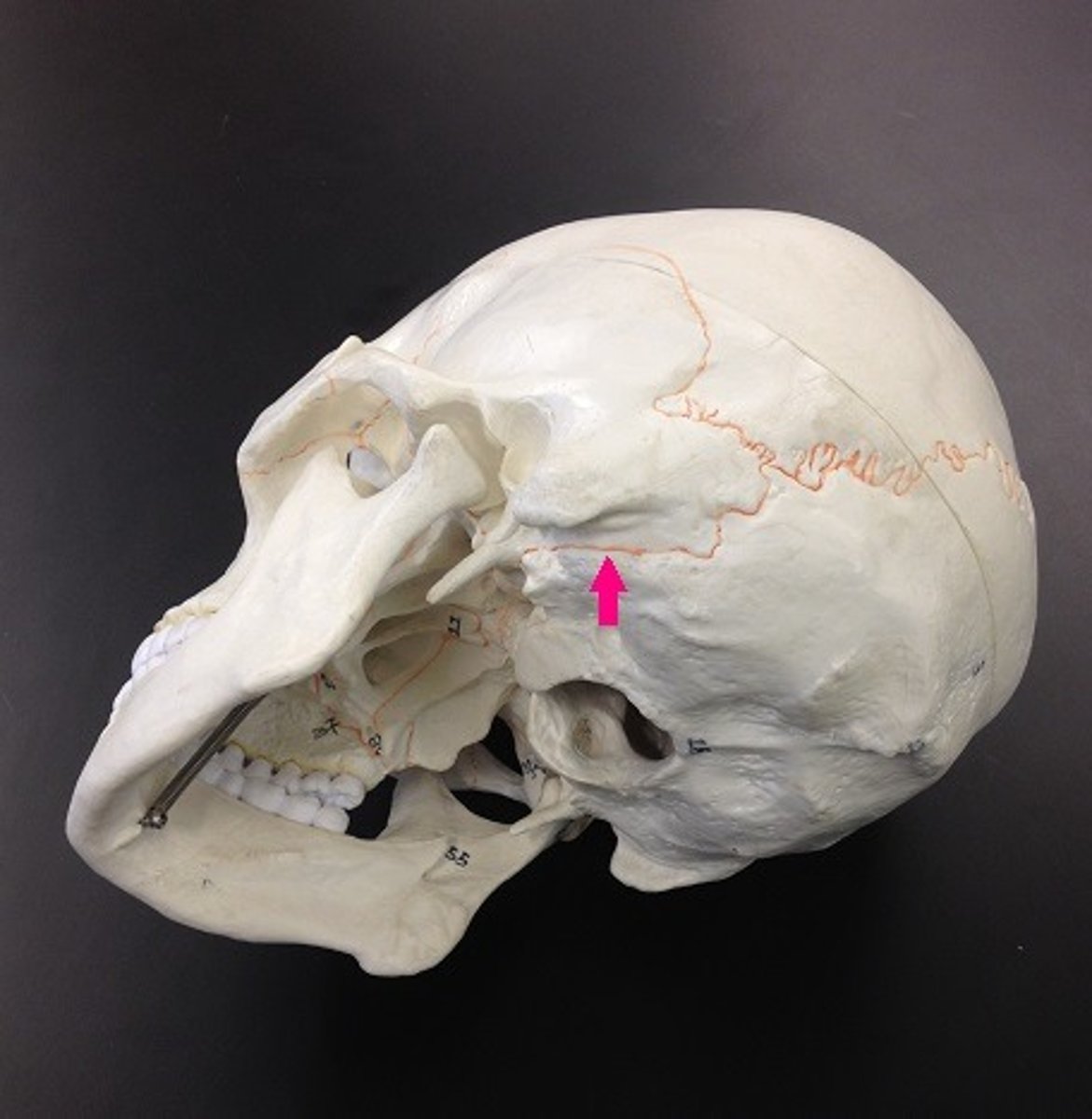
foramen magnum (occipital bone)
- the large opening in the occipital bone that allows the spinal cord to join the brain
What feature is this?
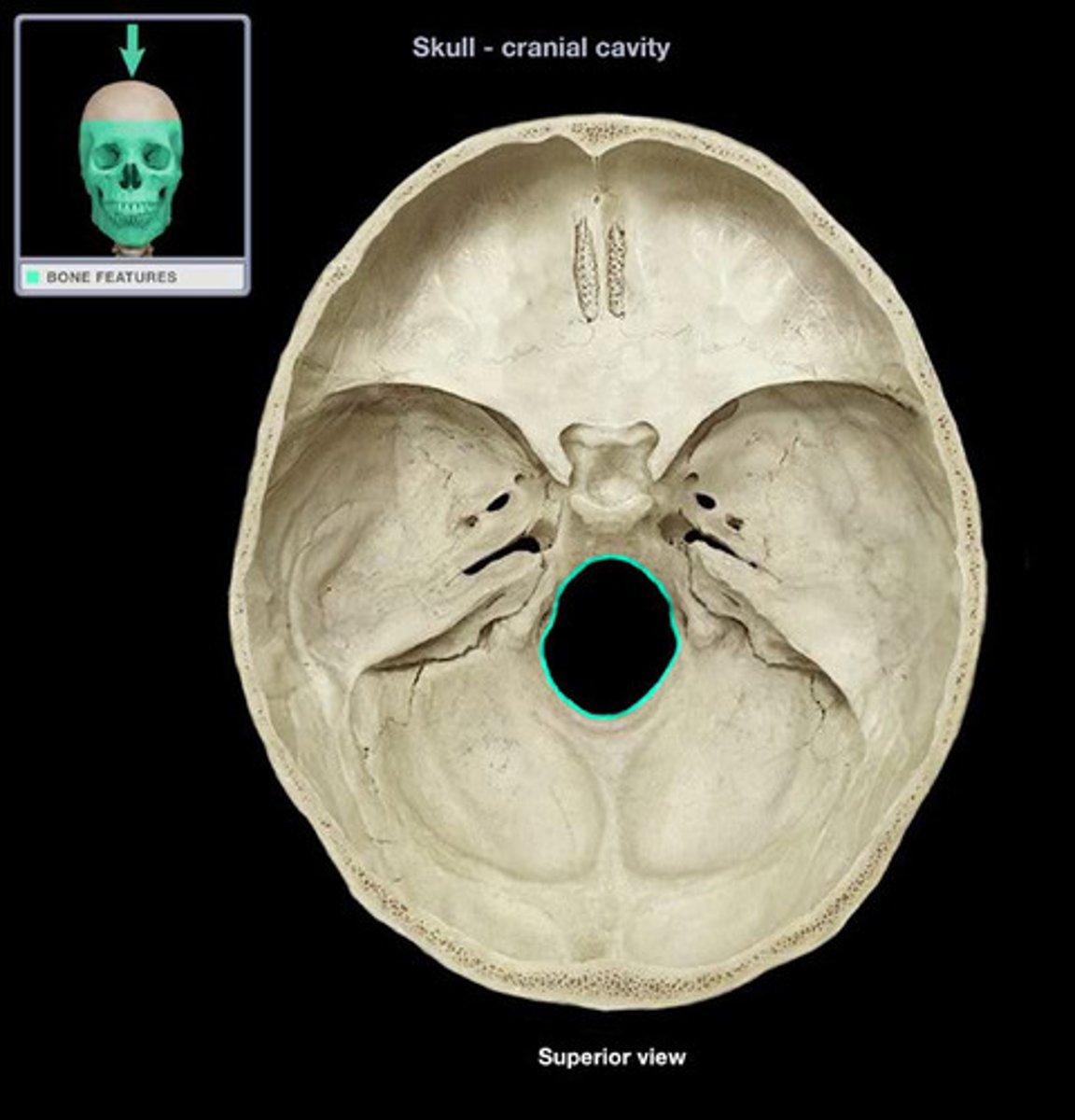
sphenoid bone
- anterior to temporal bone that forms middle portion of the floor of the cranial vault along with the temporal bone
What bone is this?
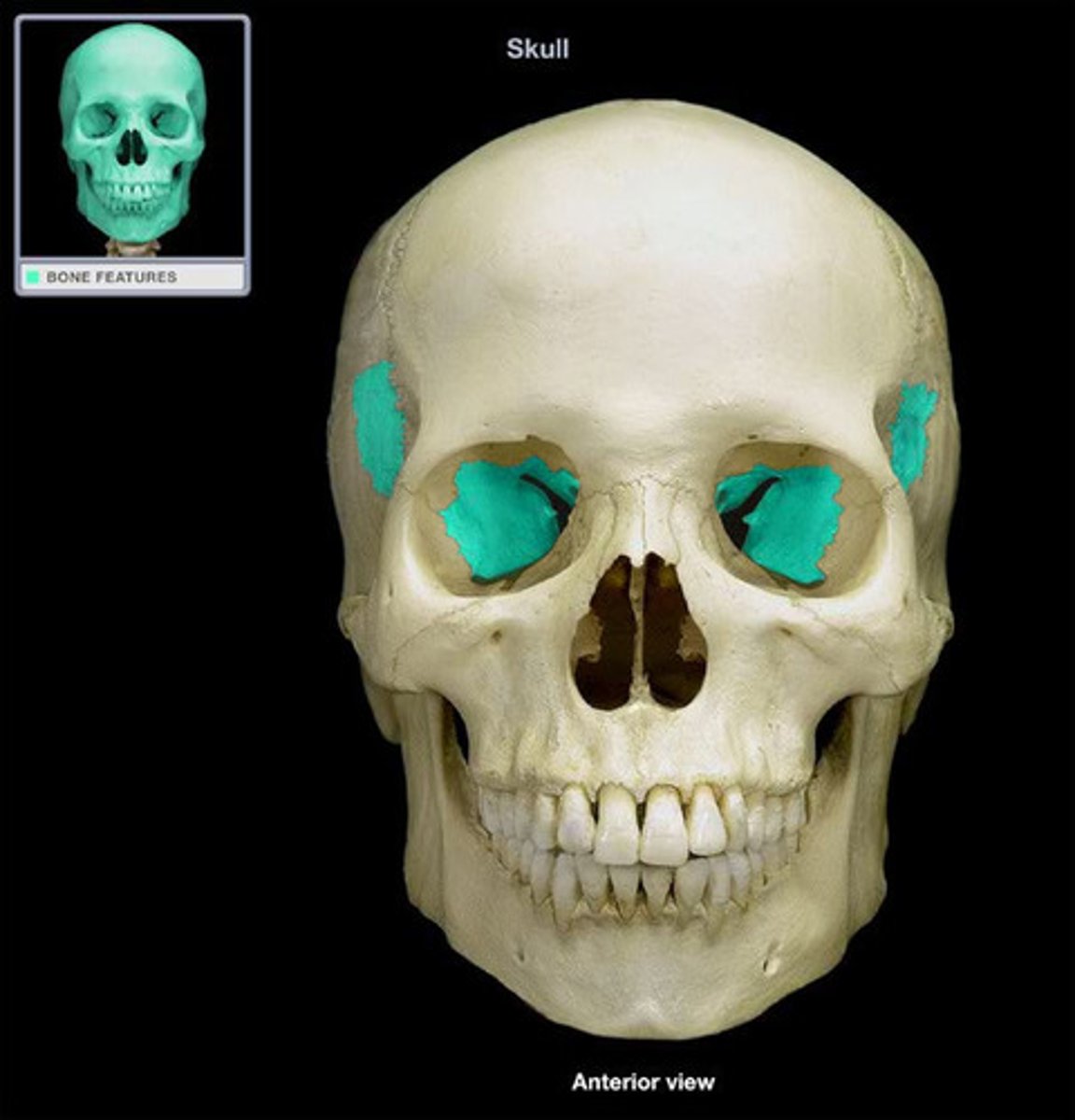
ethmoid bone
- anterior to sphenoid bone, forms medial part of orbital wall (eye socket) and part of the roof of the nasal cavity
What bone is this?
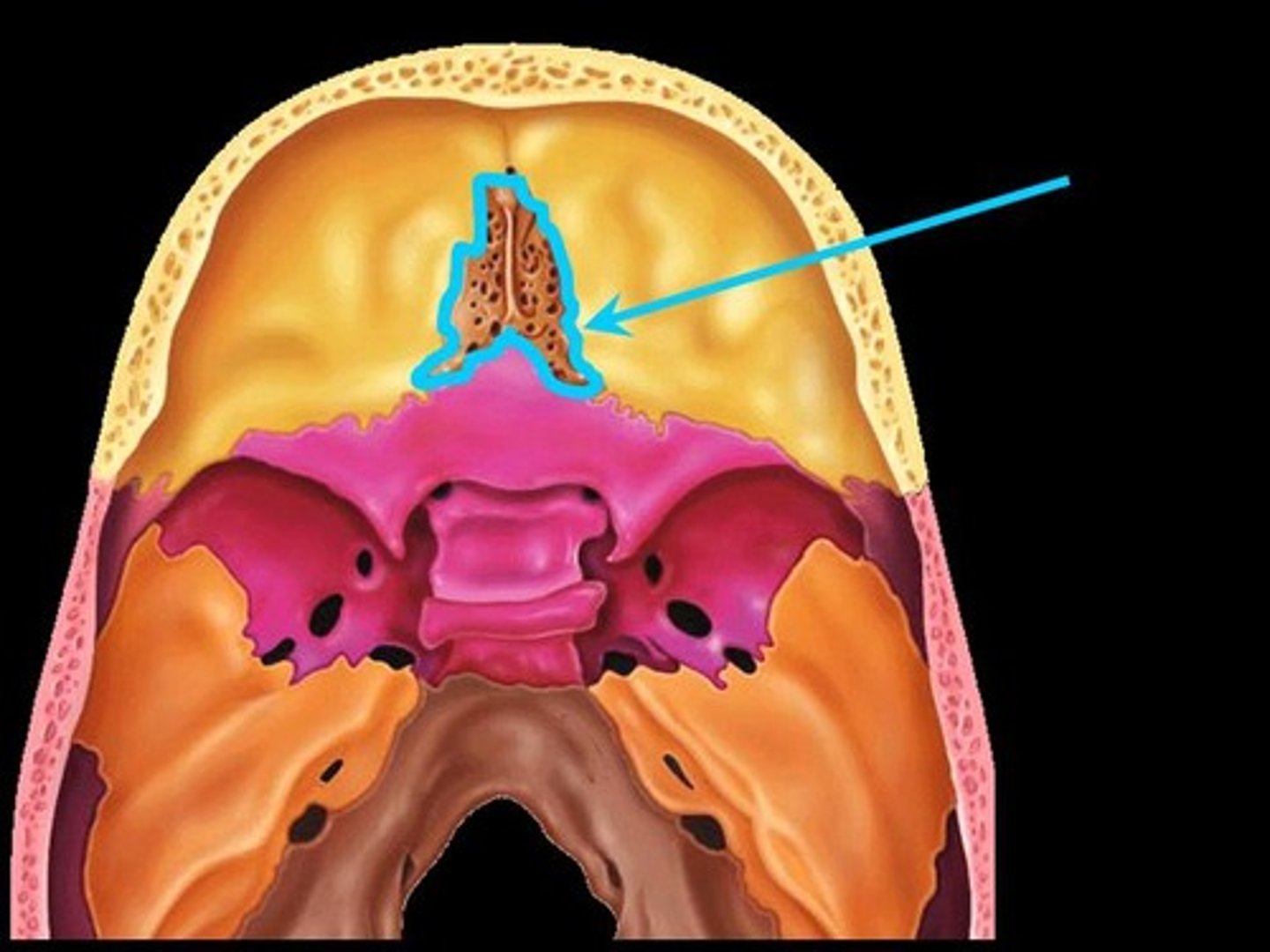
mandible
- forms the lower jaw bone and chin; articulates with the temporal bone to provide the only freely movable joint of the skull
1. mandibular angle
2. mandibular symphysis
What bone is this?
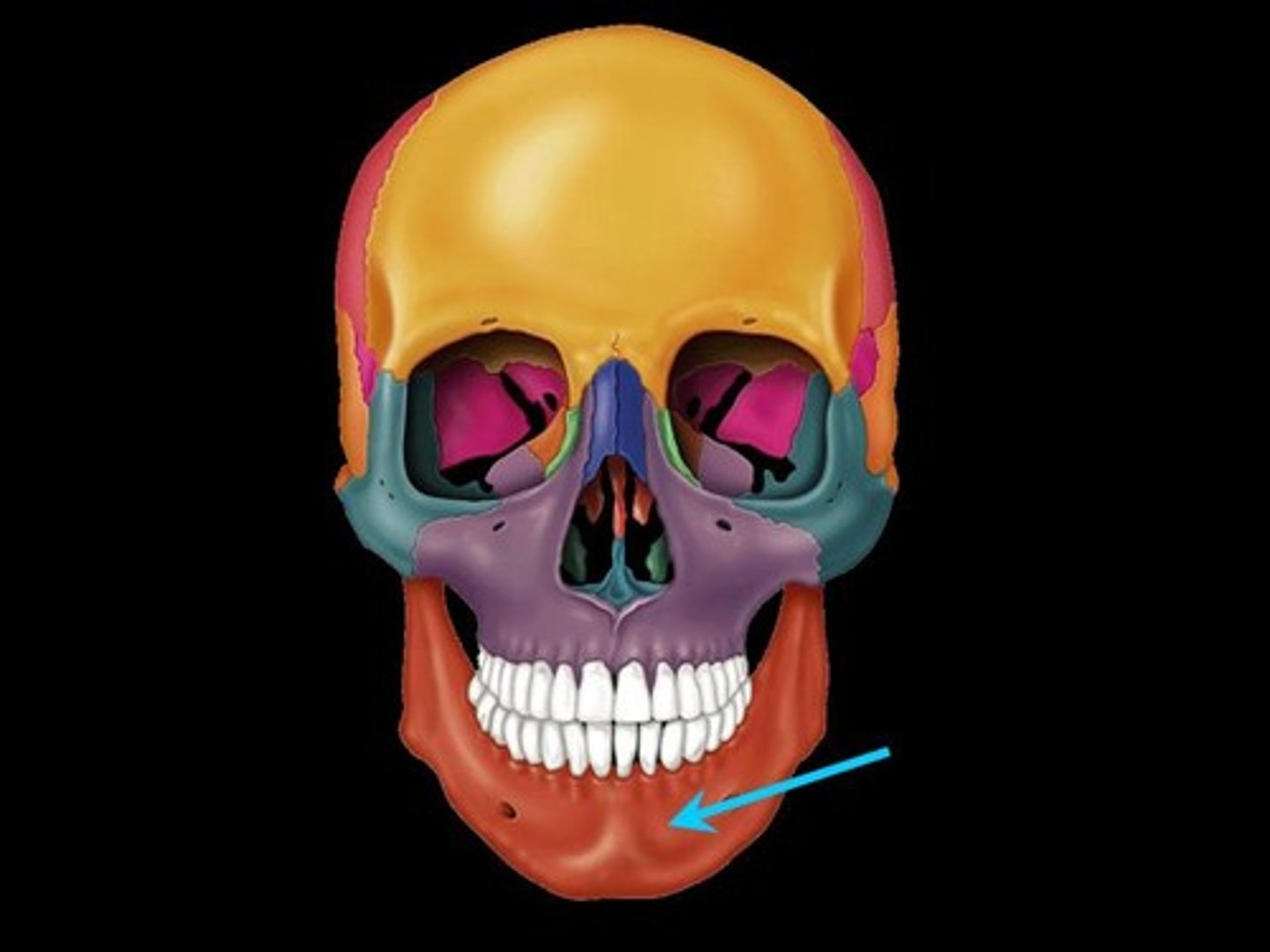
mandibular angle (mandible)
What feature is this?
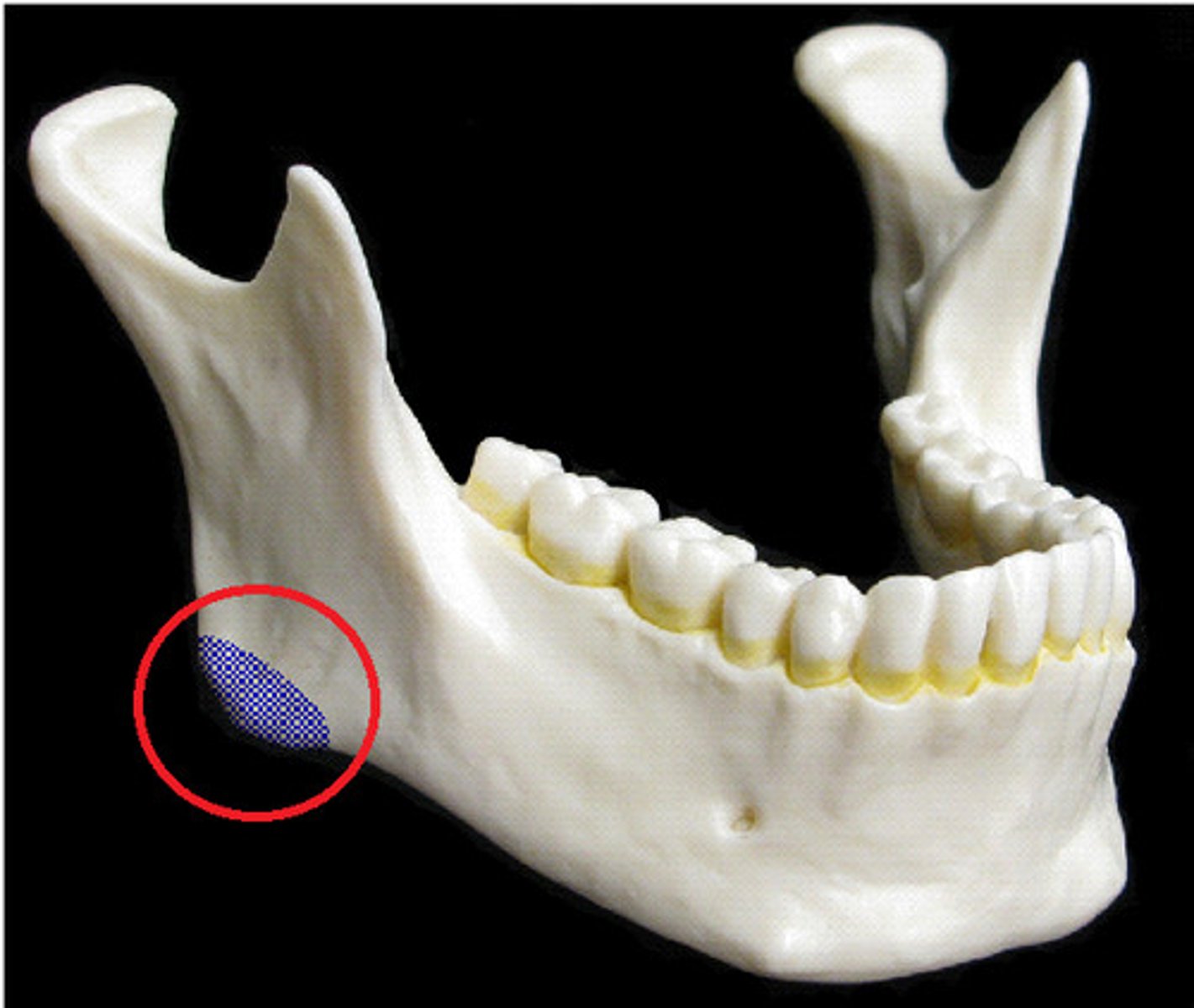
mandibular symphysis (mandible)
What feature is this?
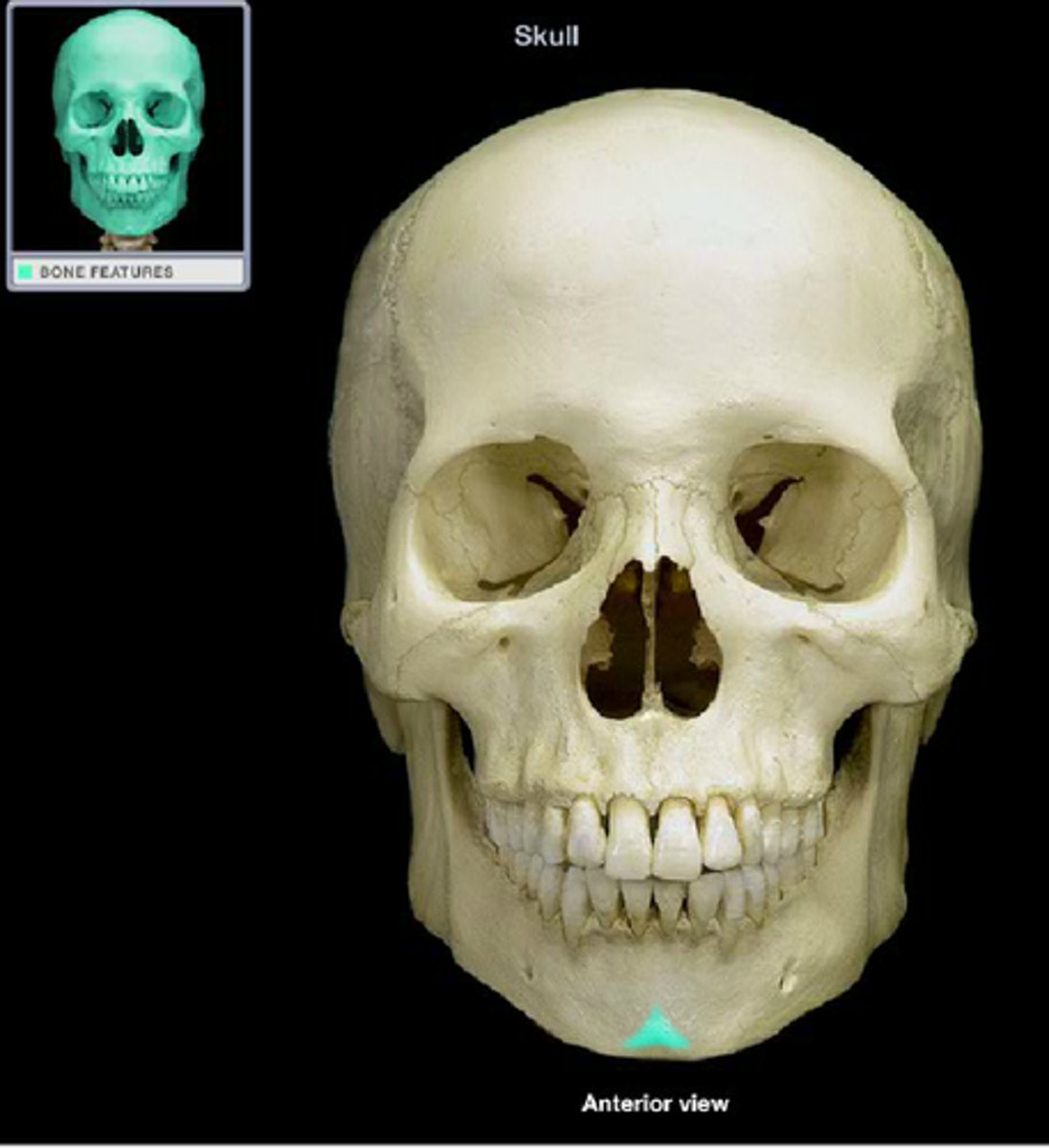
Maxilla
- form the upper jawbone and the inferior parts of the orbital walls
- all facial bones except the mandible articulate with the maxillary bones
- these bones are considered the keystone bones of your face
1. palatine processes
What bone is this?
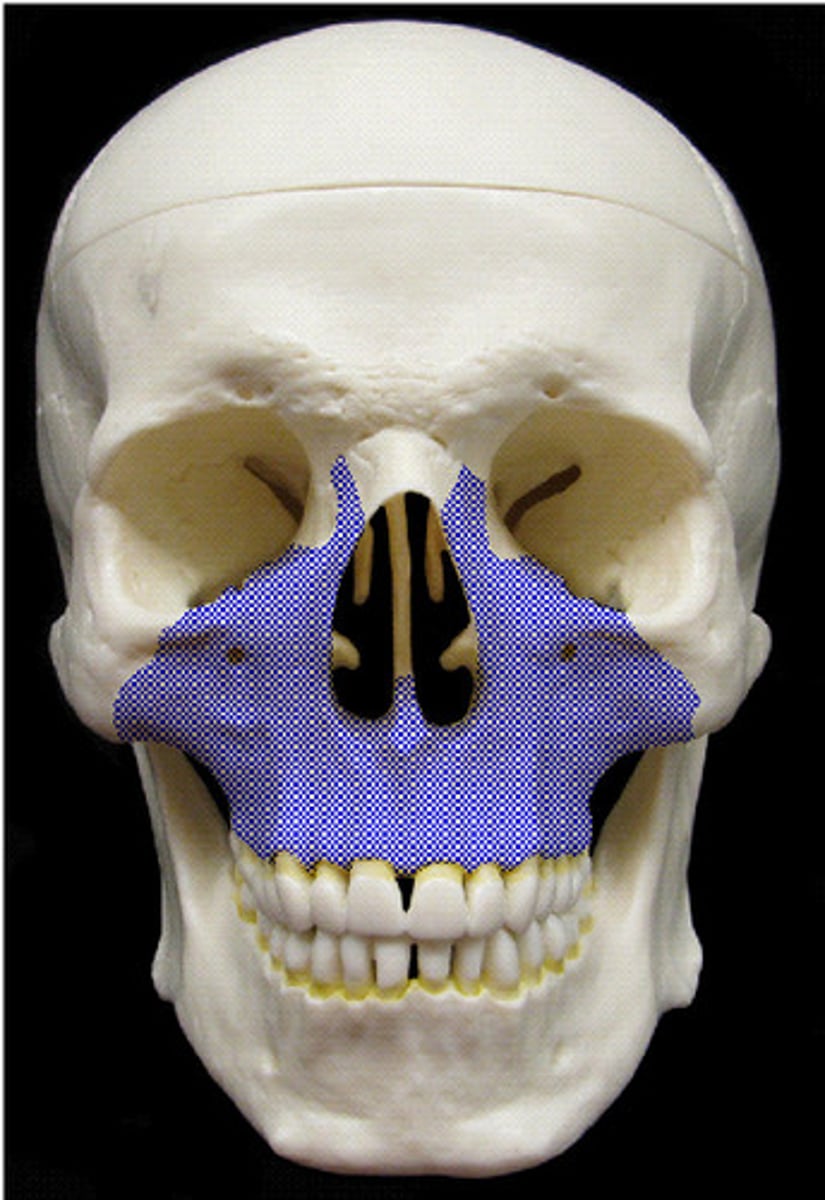
palatine process of maxilla
What feature is this?
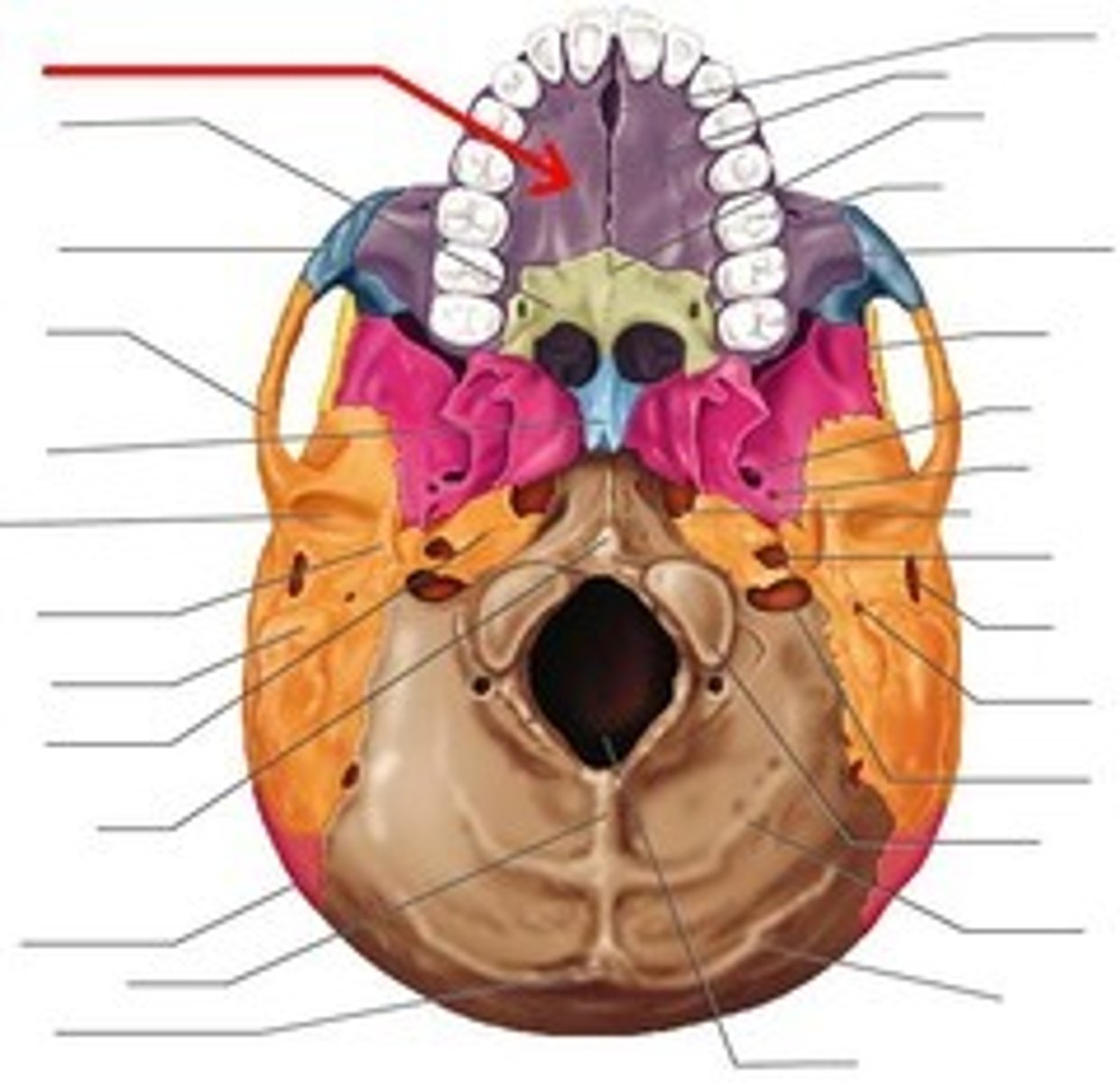
palatine bone
- posterior to the palatine processes of the maxillary bones; forms the posterior part of the hard palate
What bone is this?

zygomatic bone
- lateral to the maxilla; forms what is referred to as the cheekbone and the lateral portion of the orbital wall
1. zygomatic arch
- formed with zygomatic process of the temporal bone
What bone is this?

zygomatic arch
What feature is this?
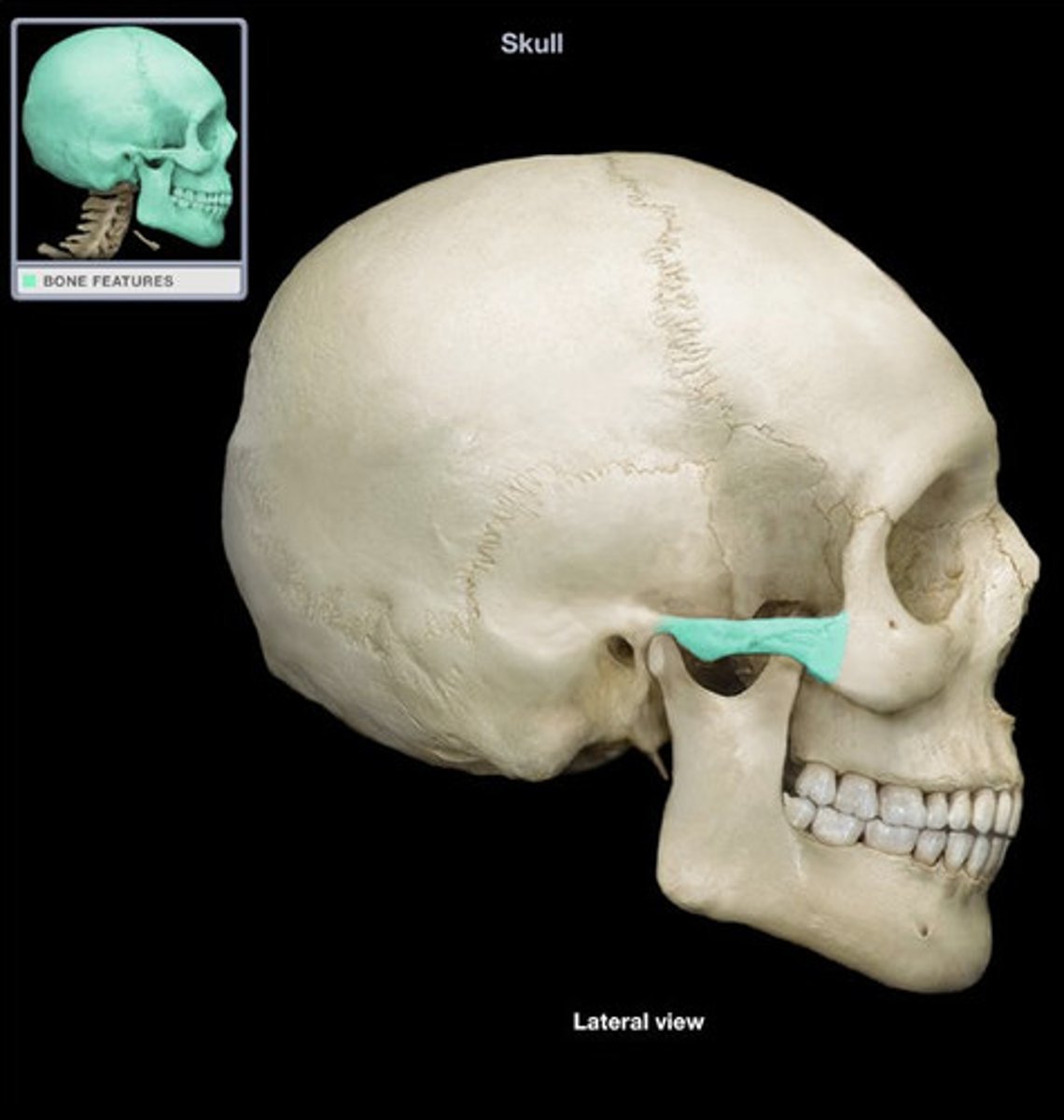
lacrimal bone
- small bones between the maxilla and ethmoid bone; forms the medial part of the orbital wall
1. lacrimal fossa
- provides a passageway for tears from the eye to the nose
What bone is this?

lacrimal fossa (lacrimal bone)
What feature is this?
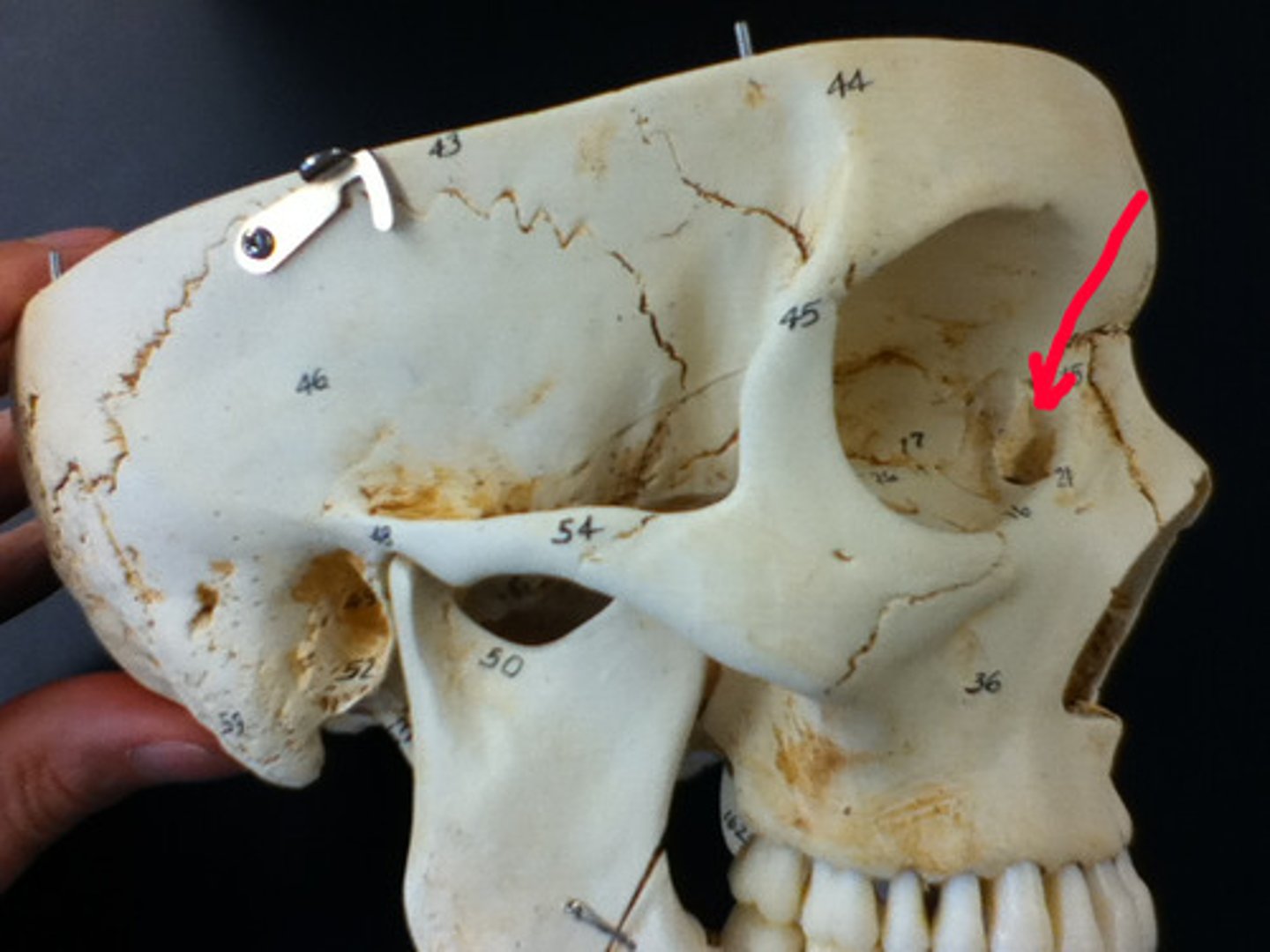
nasal bone
- small bones which form the bridge of the nose
What bone is this?
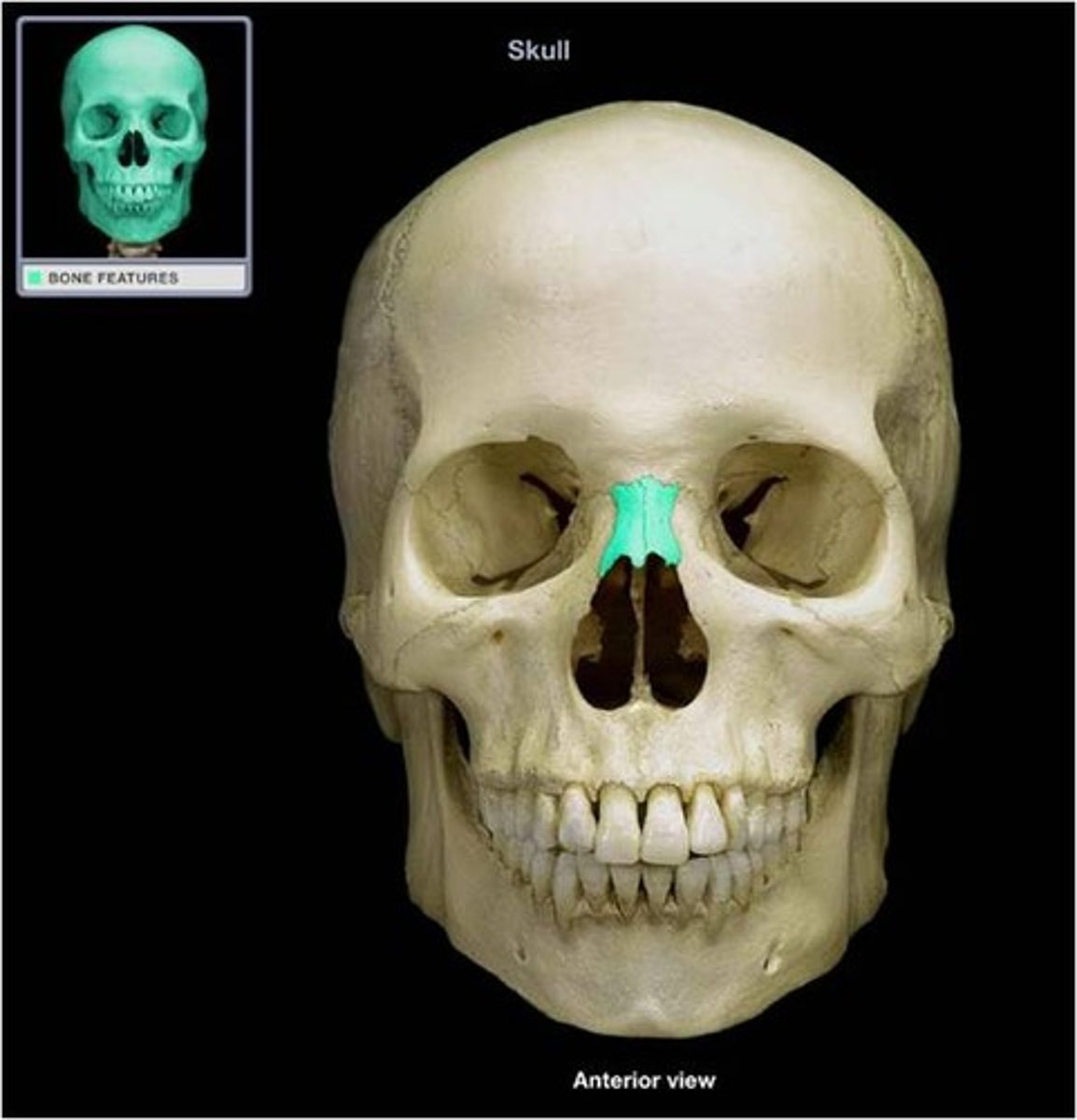
vomer bone
- located within the nasal cavity, forming the median plane of the nasal cavity
What bone is this?

vomer bone
- located within the nasal cavity, forming the median plane of the nasal cavity
What bone is this?
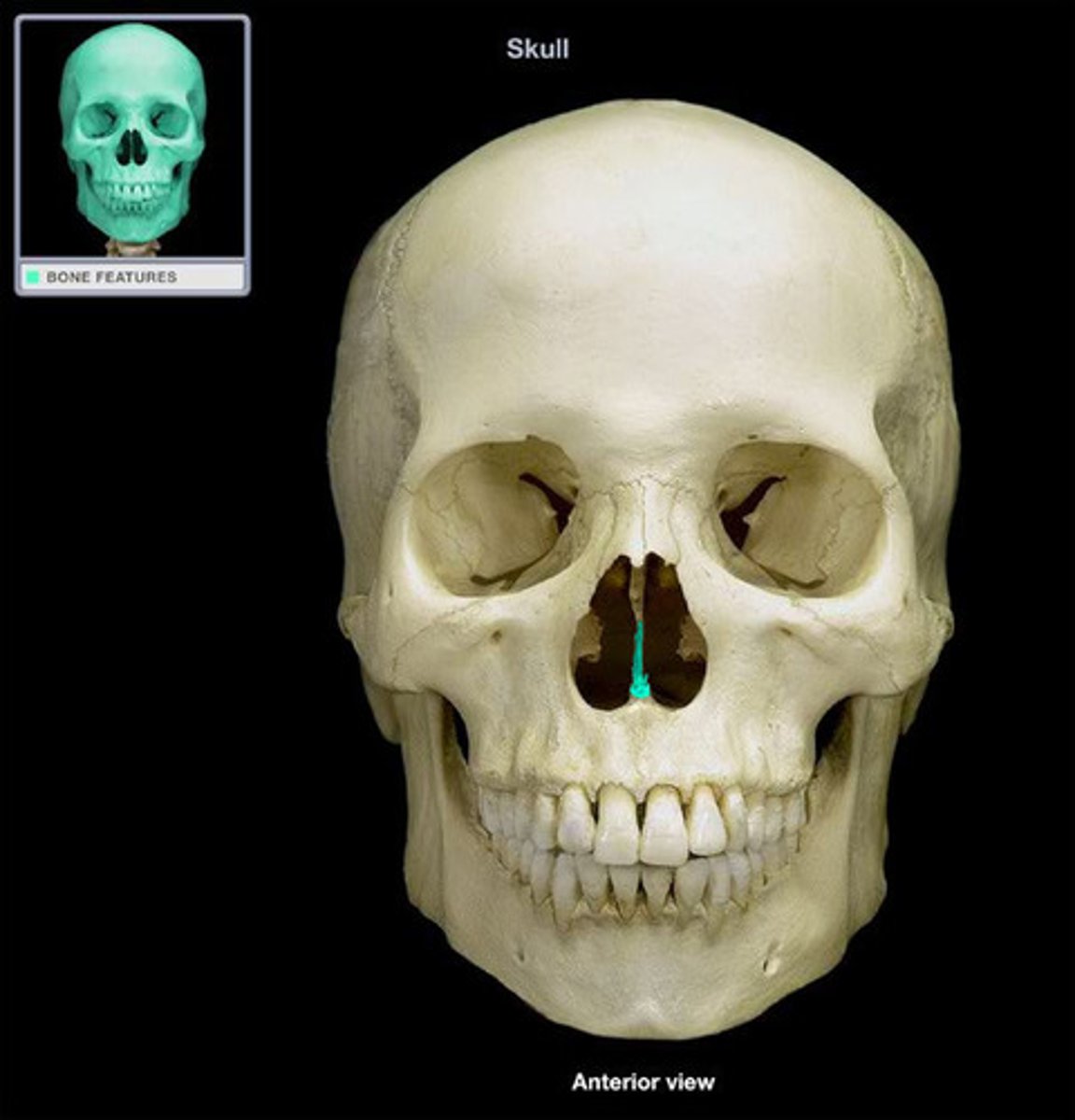
inferior nasal concha
- thin curved bones that protrude medially from the lateral walls of the nasal cavity
What bone is this?
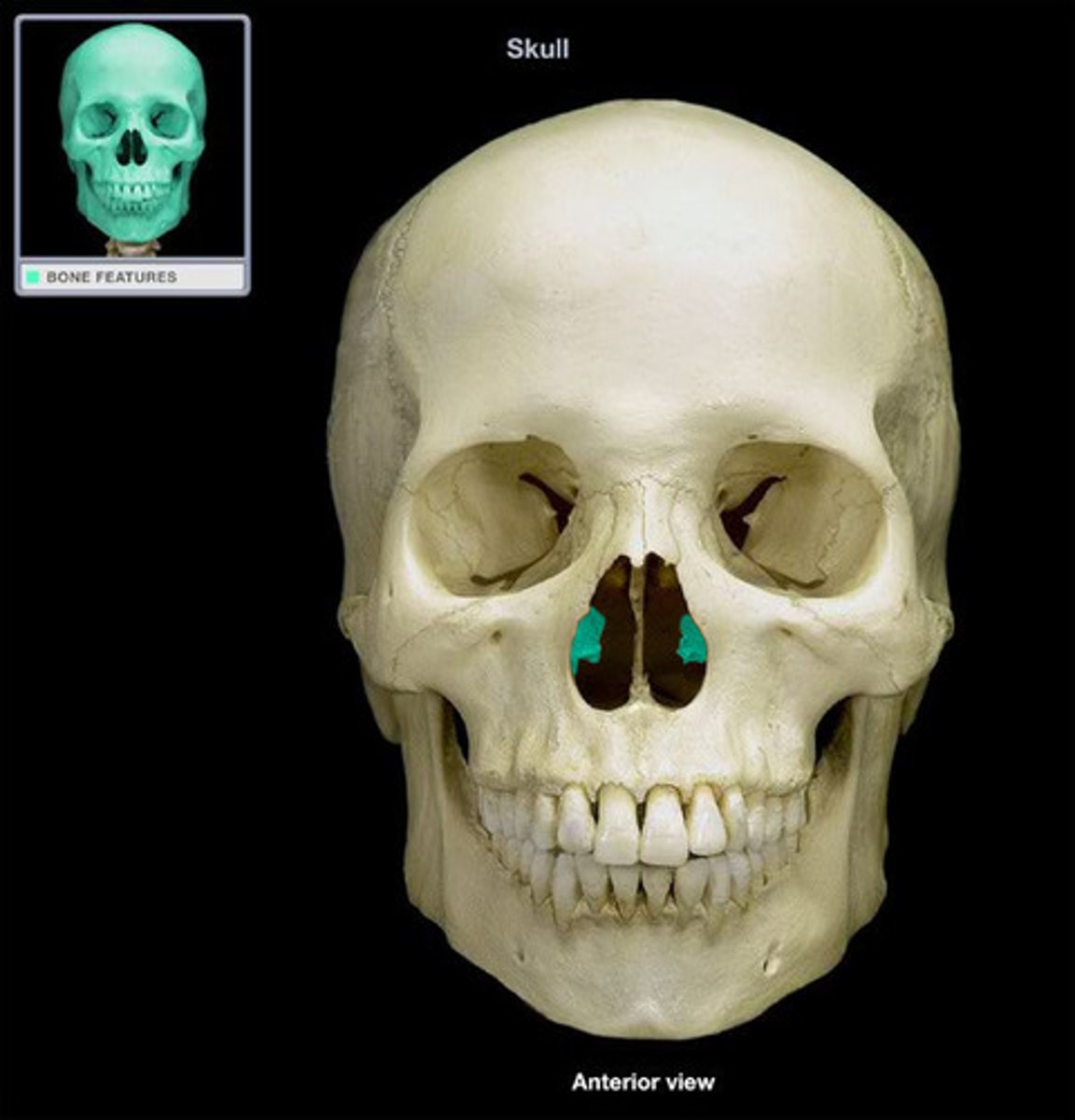
hyoid bone
- only bone in the body that does not articulate with another bone
What bone is this?
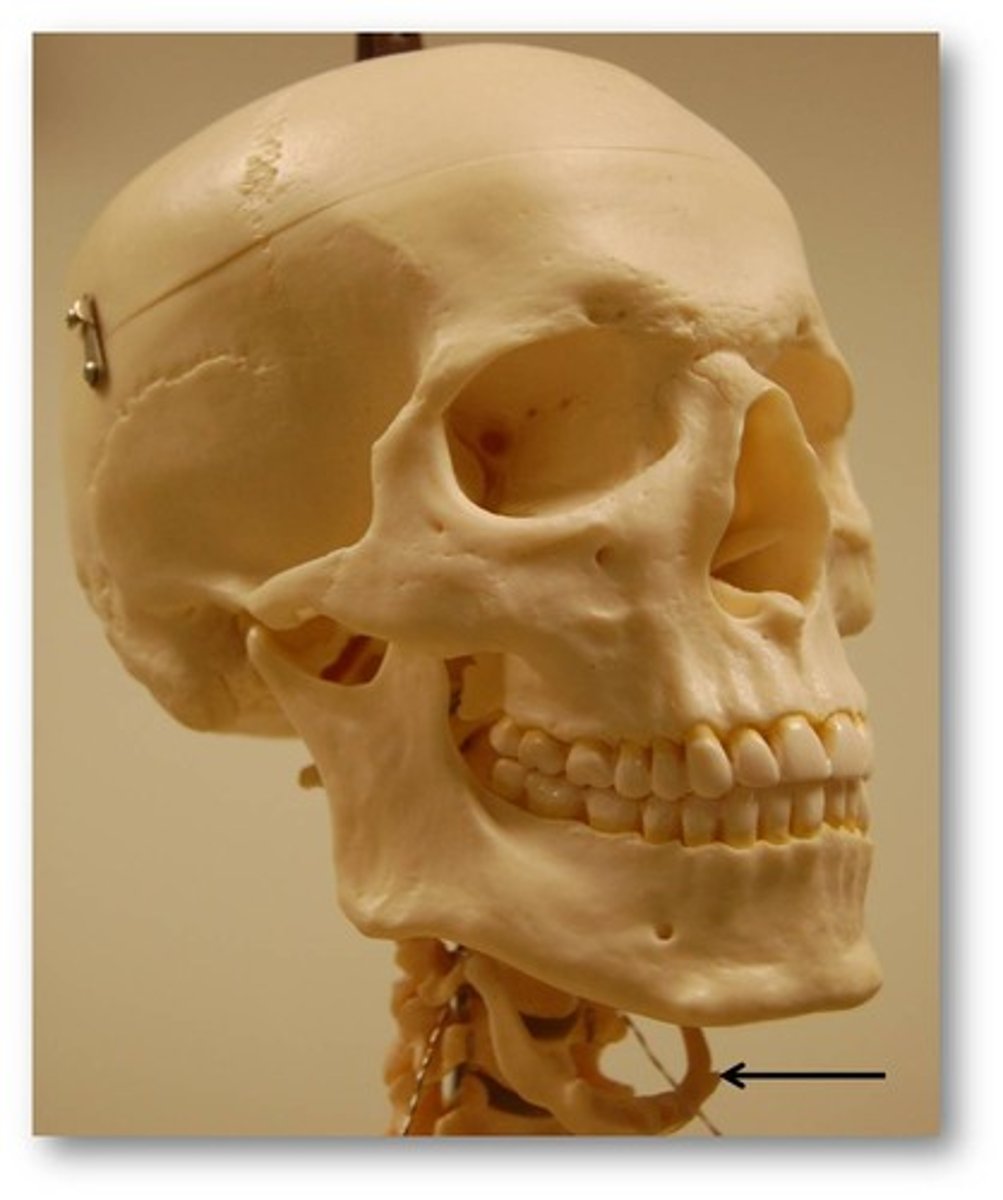
fluid-filled fibrocartilage that absorb shock
What are intervertebral discs?
body
What part of the vertebrae is this?
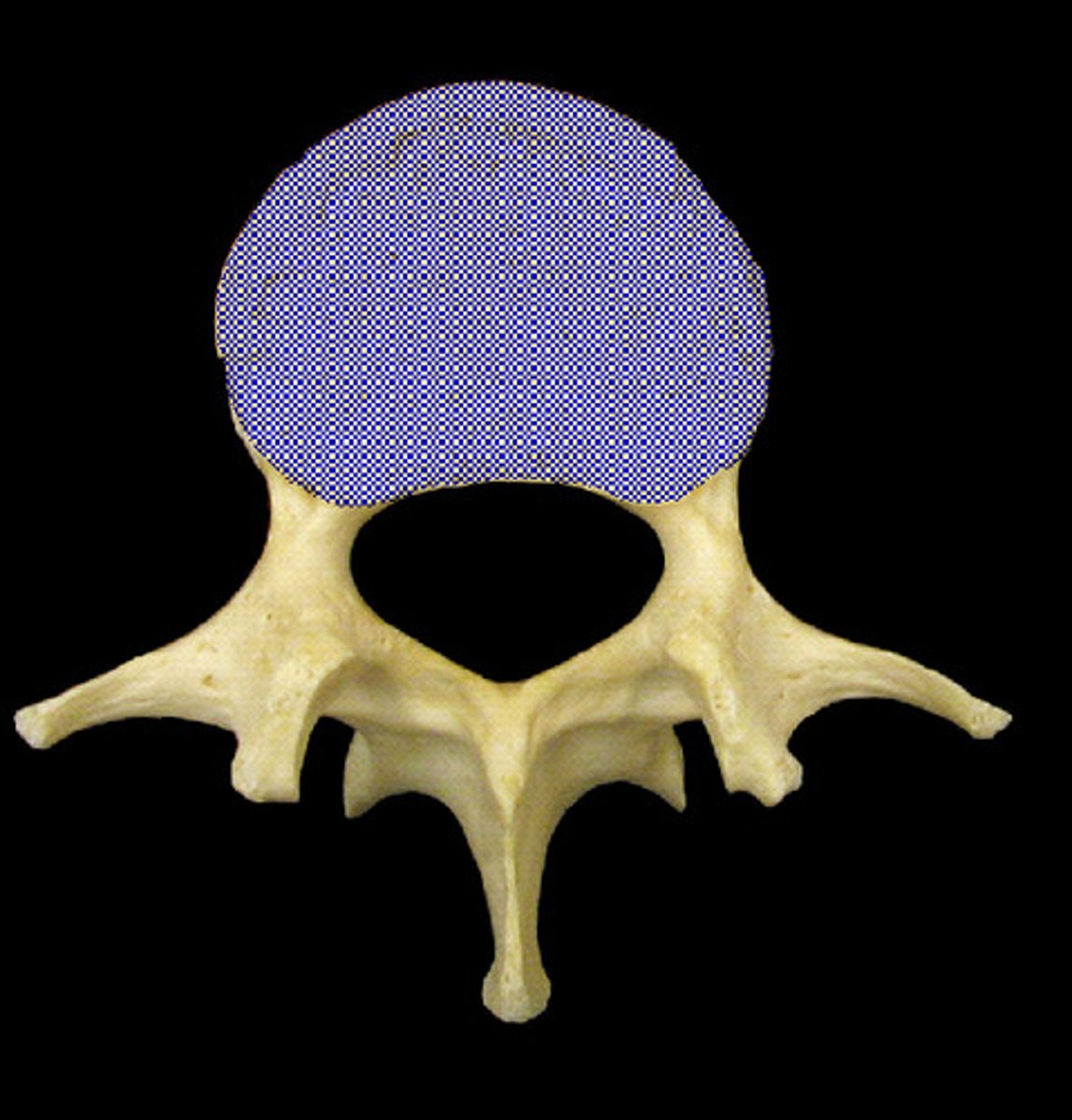
Vertebral foramen
- conduit for the spinal cord
What feature is this?
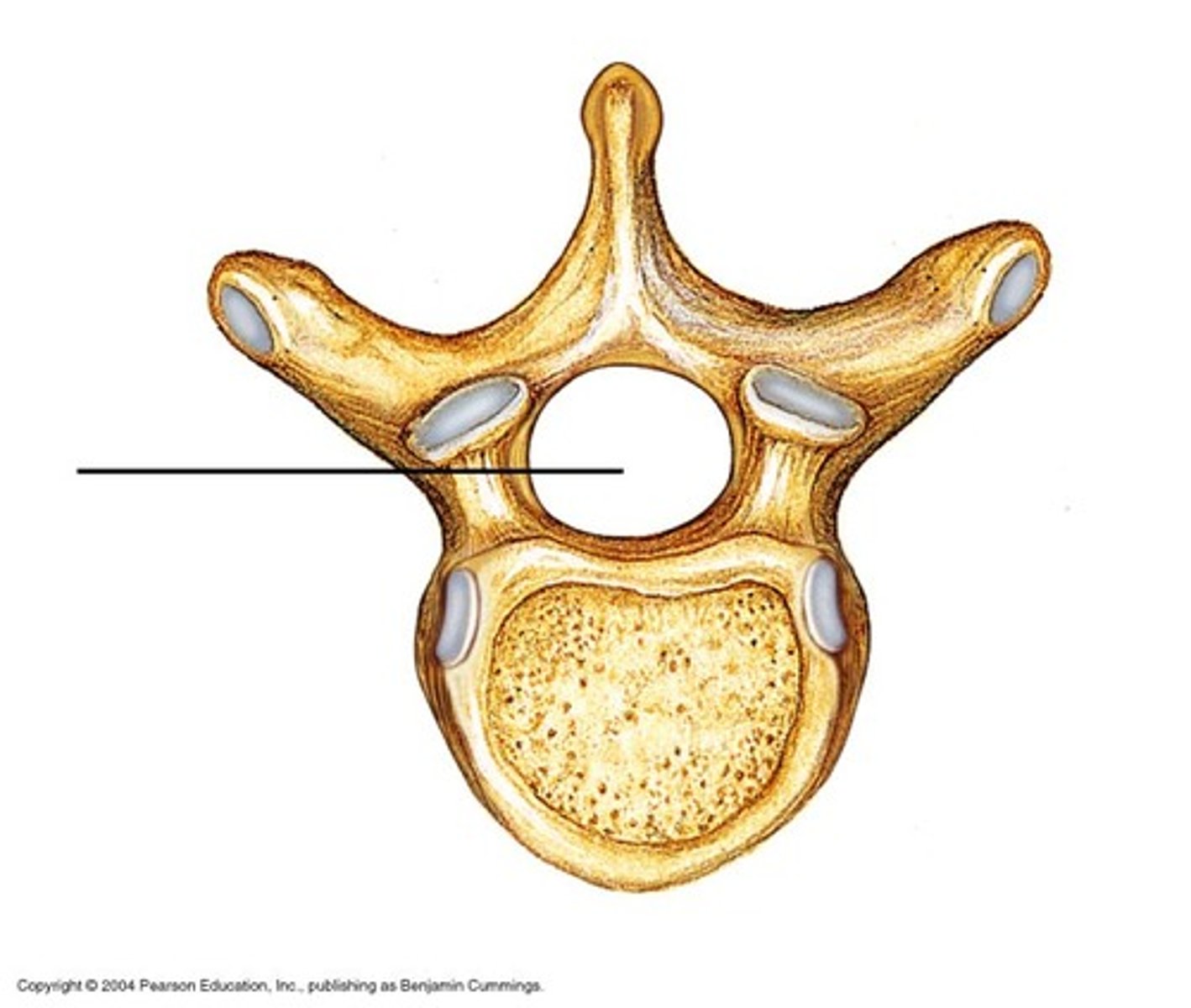
transverse processes
- paired lateral projections from the body
What feature of the vertebrae is this?
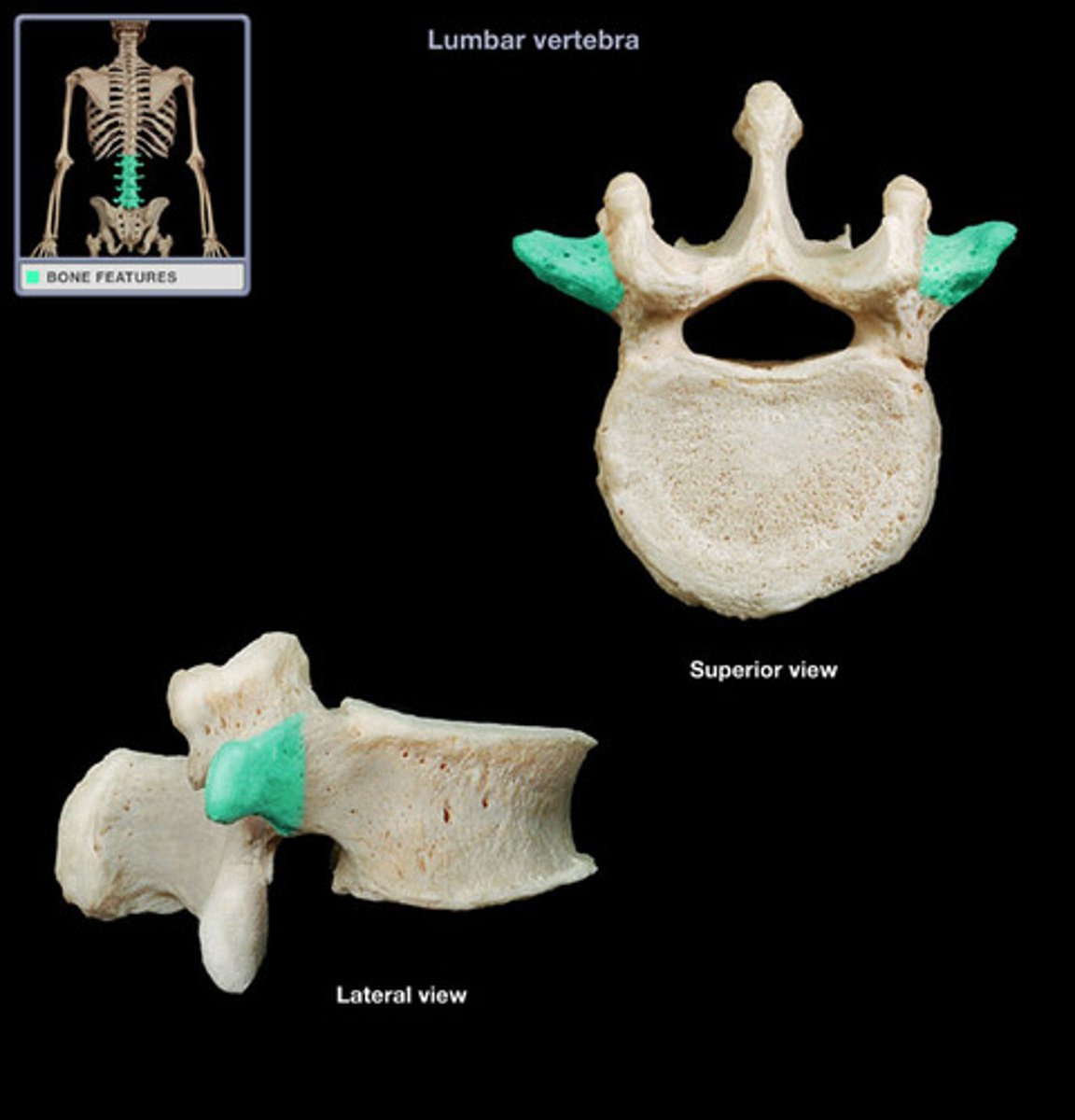
spinous process
- single posterior projection from the body
What feature is this?

superior articular process
- projection lateral to the vertebral foramen that allow for the articulation o adjacent vertebrae
What feature is this?
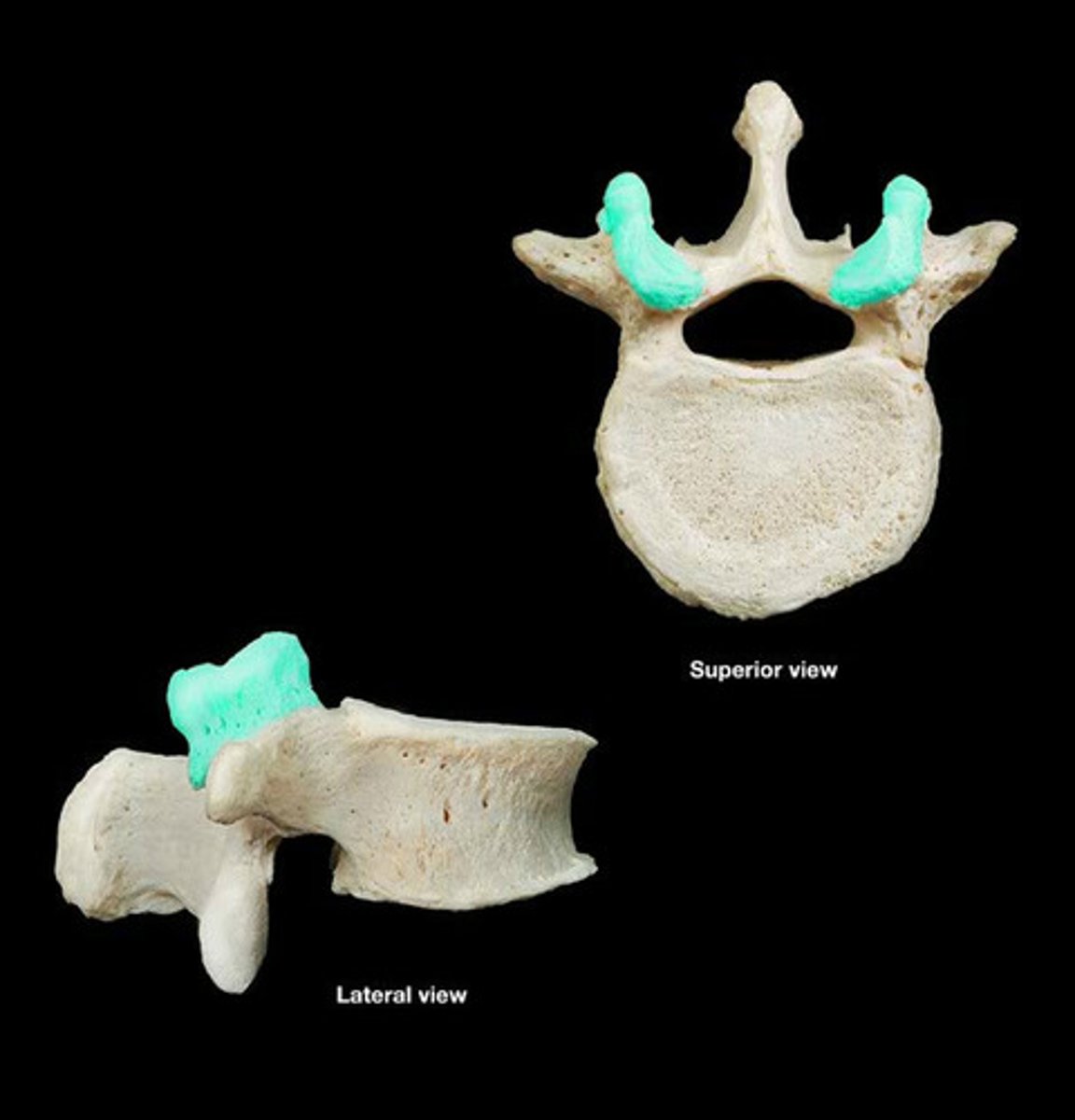
inferior articular process
- projection lateral to the vertebral foramen that allow for the articulation o adjacent vertebrae
What feature is this?
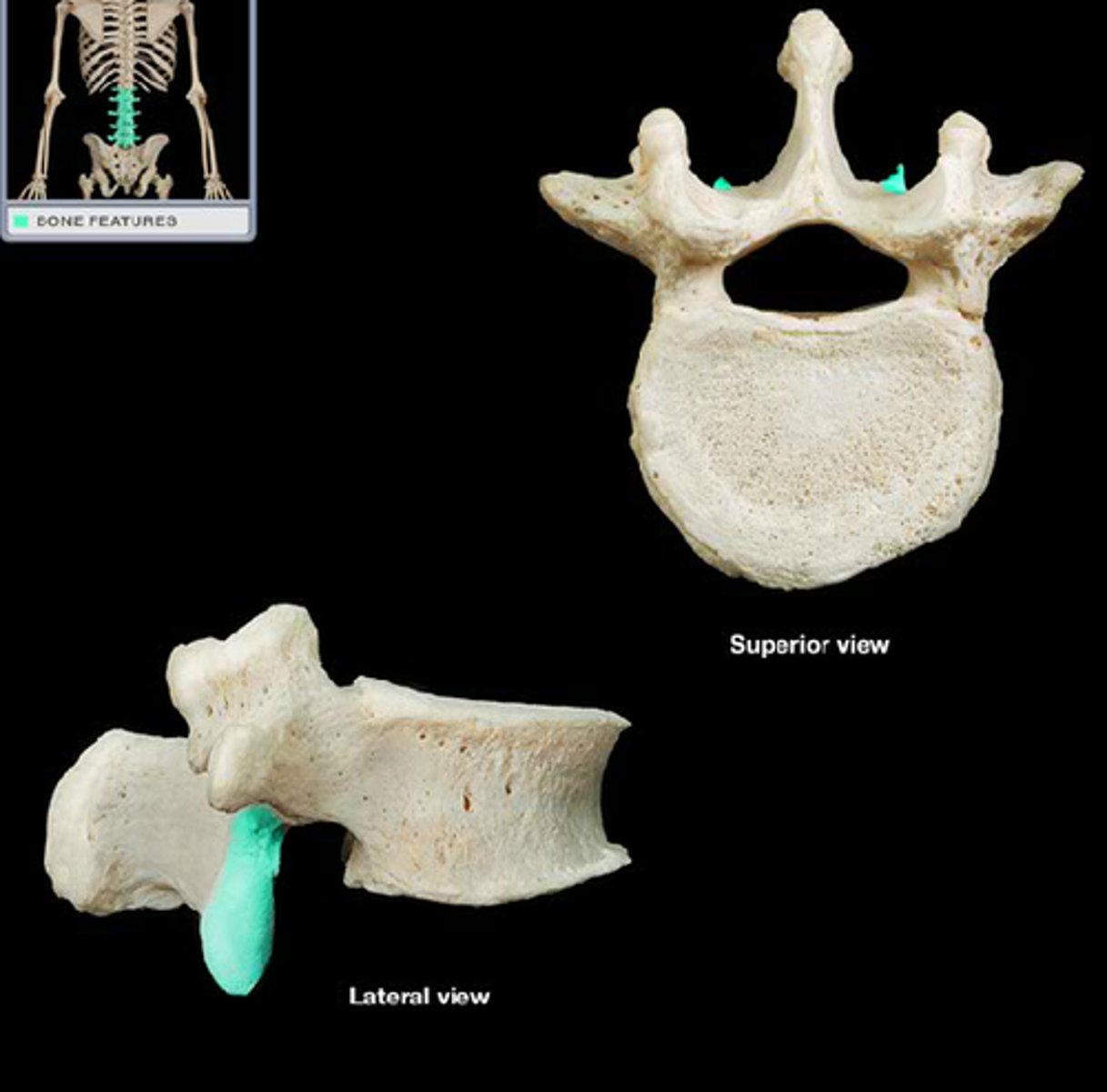
superior is on the outside and inferior is on the inside
How do superior and inferior articular processes fit together?
atlas (c1) (Cervical Vertebrae)
- the superior articulation between the atlas and the base of the skull allows you to nod your head "yes"
What bone is this?
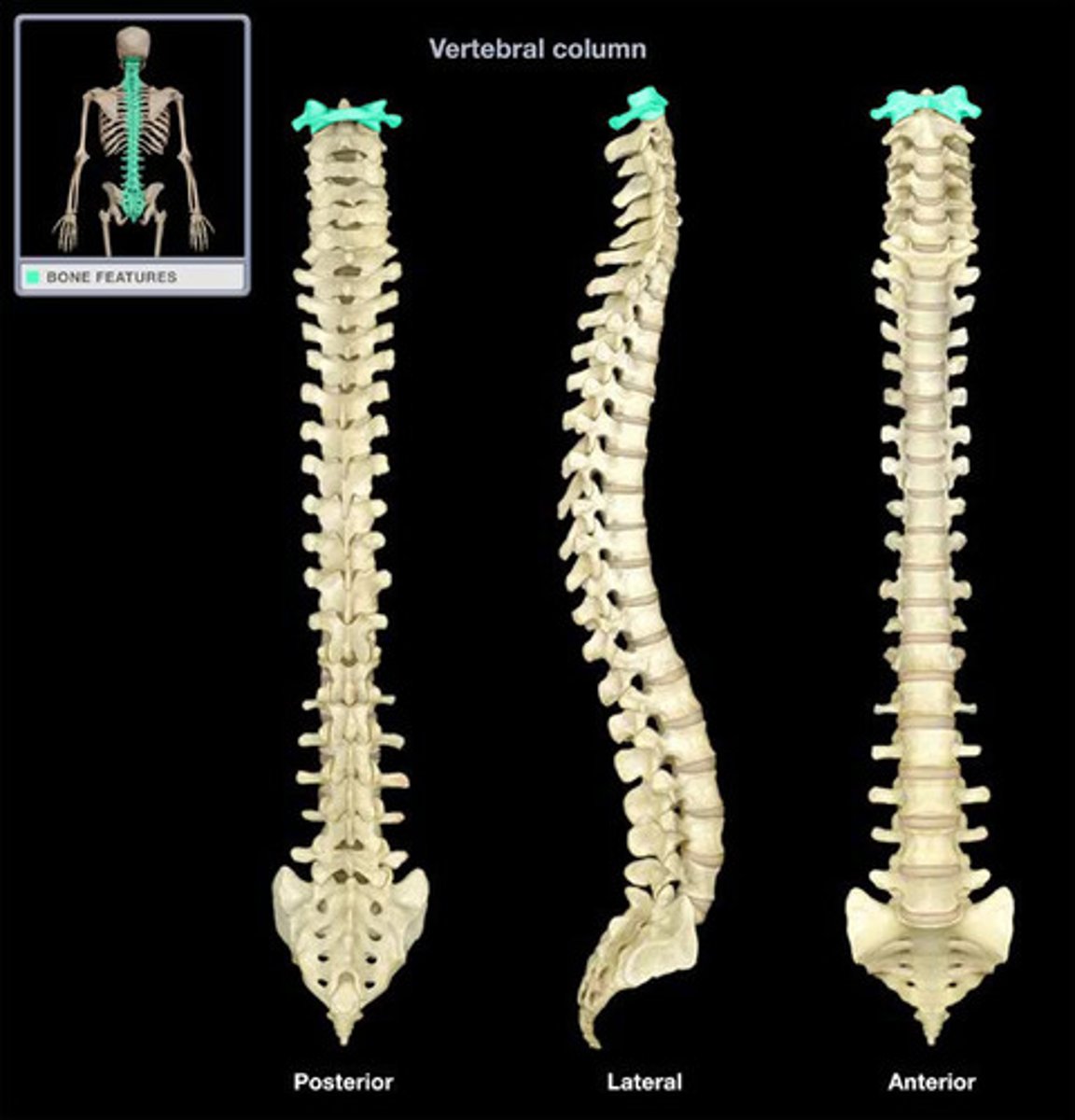
axis (c2) (Cervical Vertebrae)
- acts as a pivot and allows the atlas above it to rotate, allowing you to shake your head "no"
What bone is this?
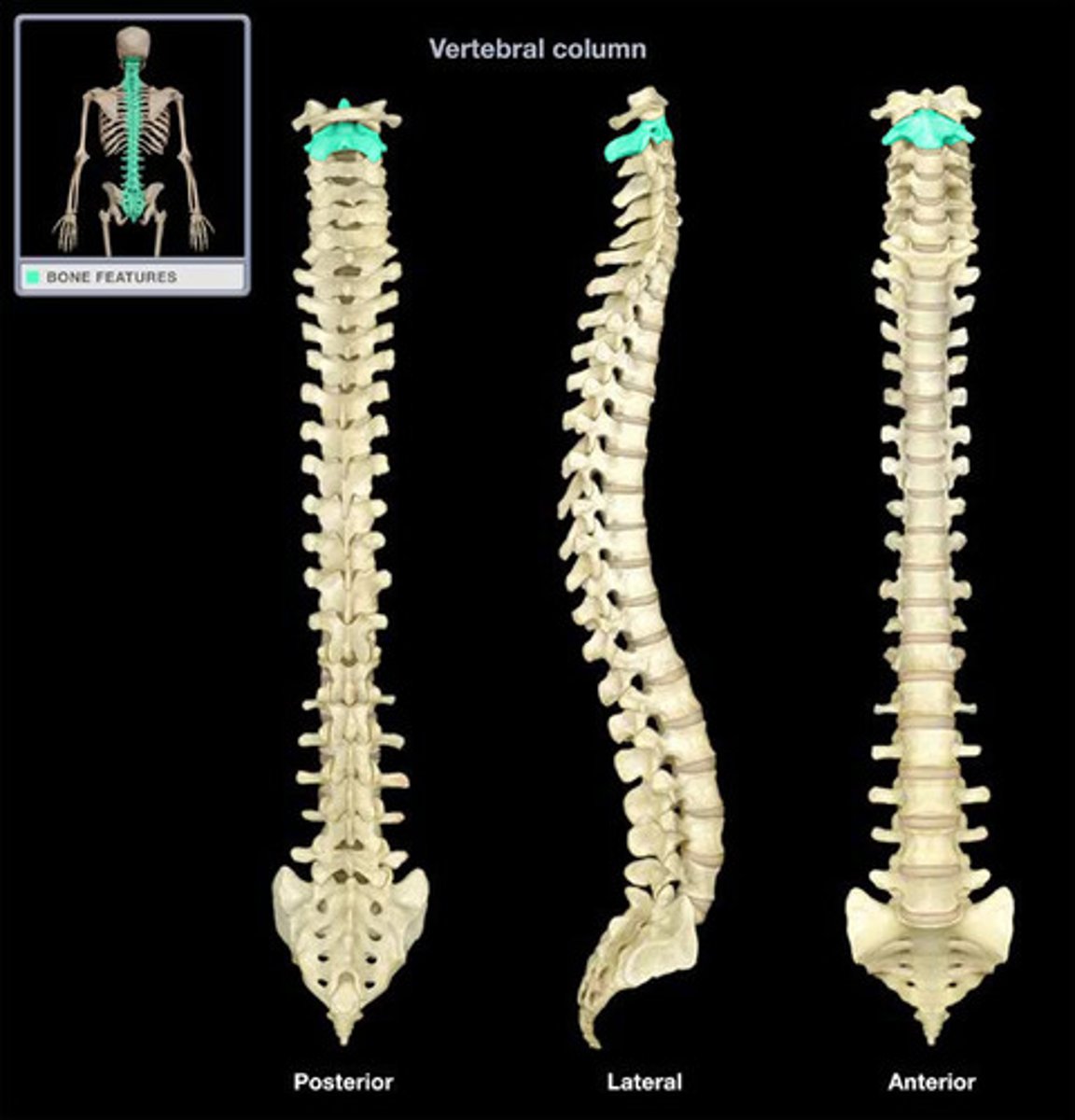
nod your head yes
What does the atlas vertebrae allow you to do?
shake your head no
What does the axis vertebrae allow you to do?
7
How many cervical vertebrae?
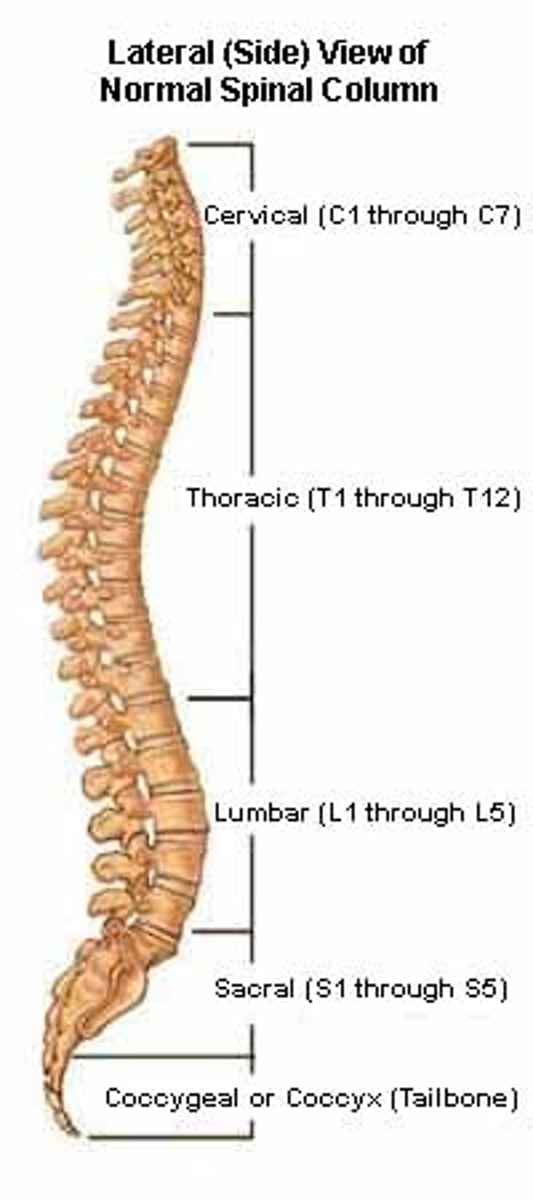
12
How many thoracic vertebrae?
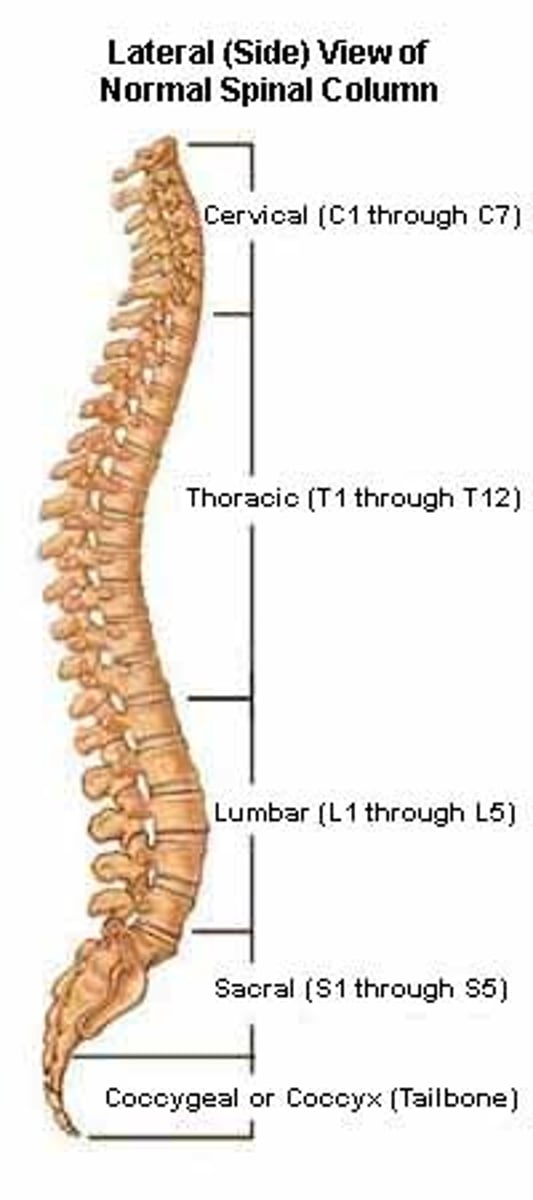
5
How many lumbar vertebrae?
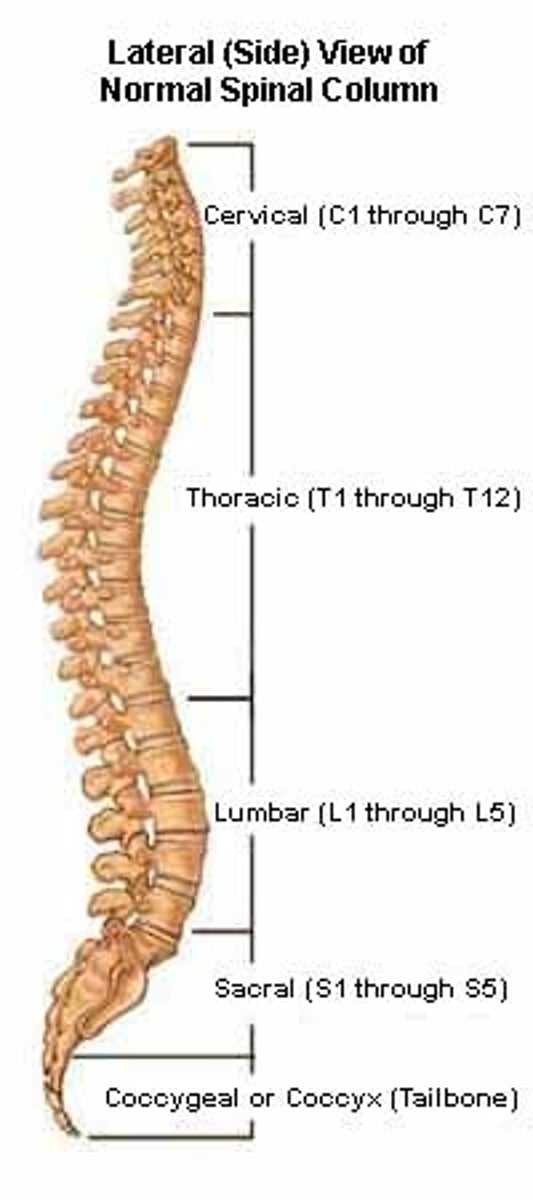
five fused vertebrae
What is the sacrum made up of?
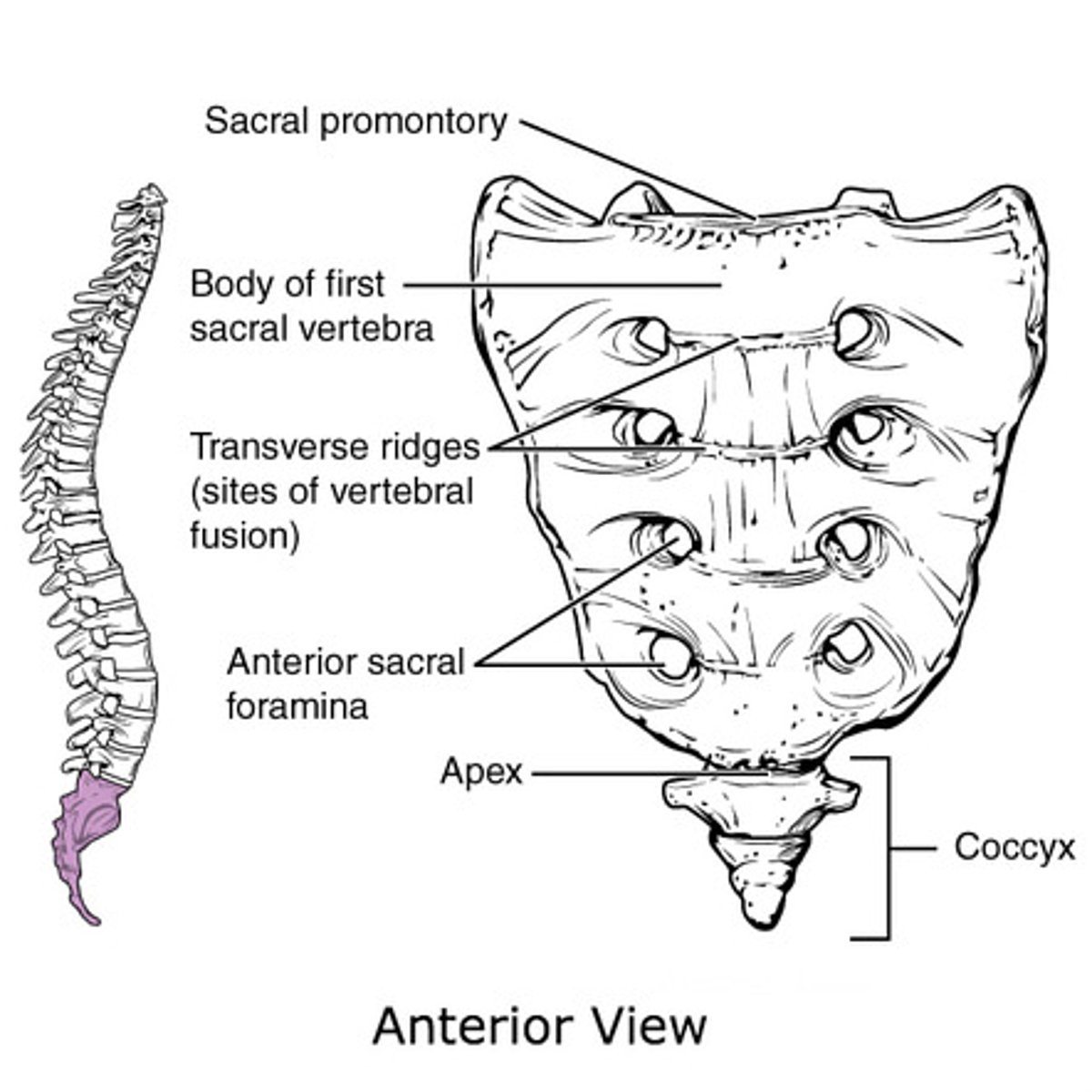
fusion of several small vertebrae
What is the coccyx made up of?

cervical
What region of the spine is this?
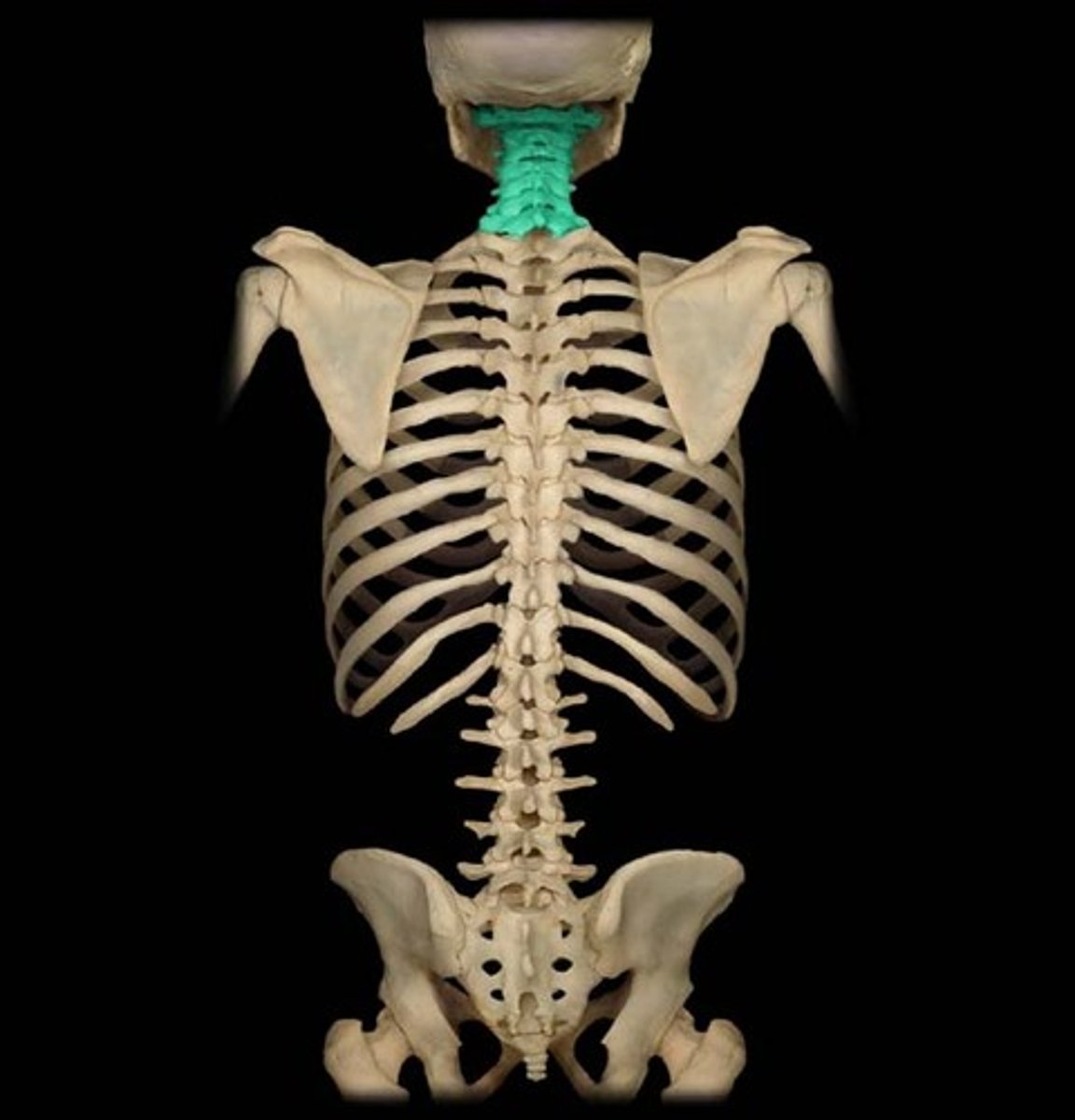
thoracic
What region of the spine is this?
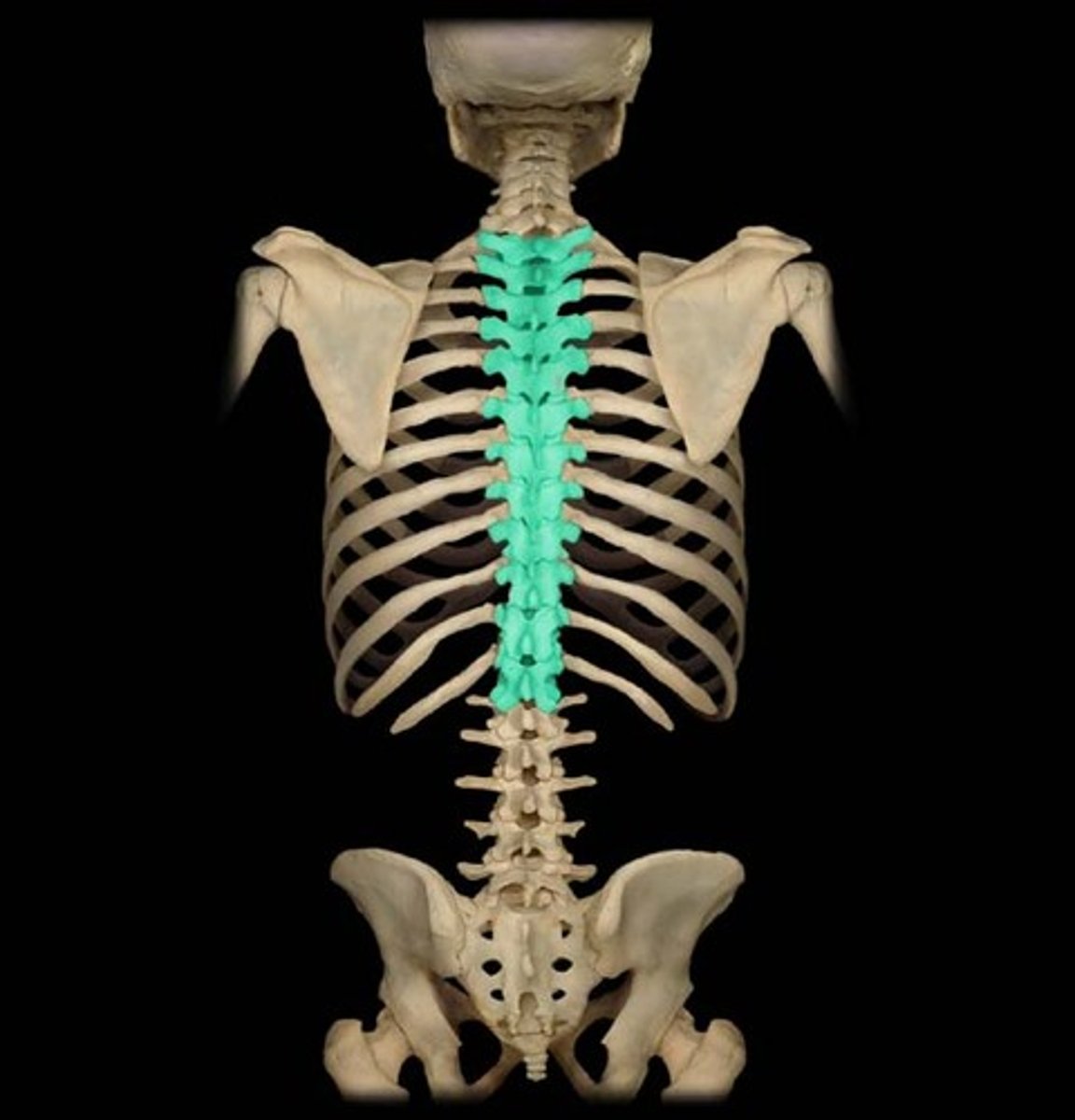
lumbar
What region of the spine is this?

sacrum
What region of the spine is this?
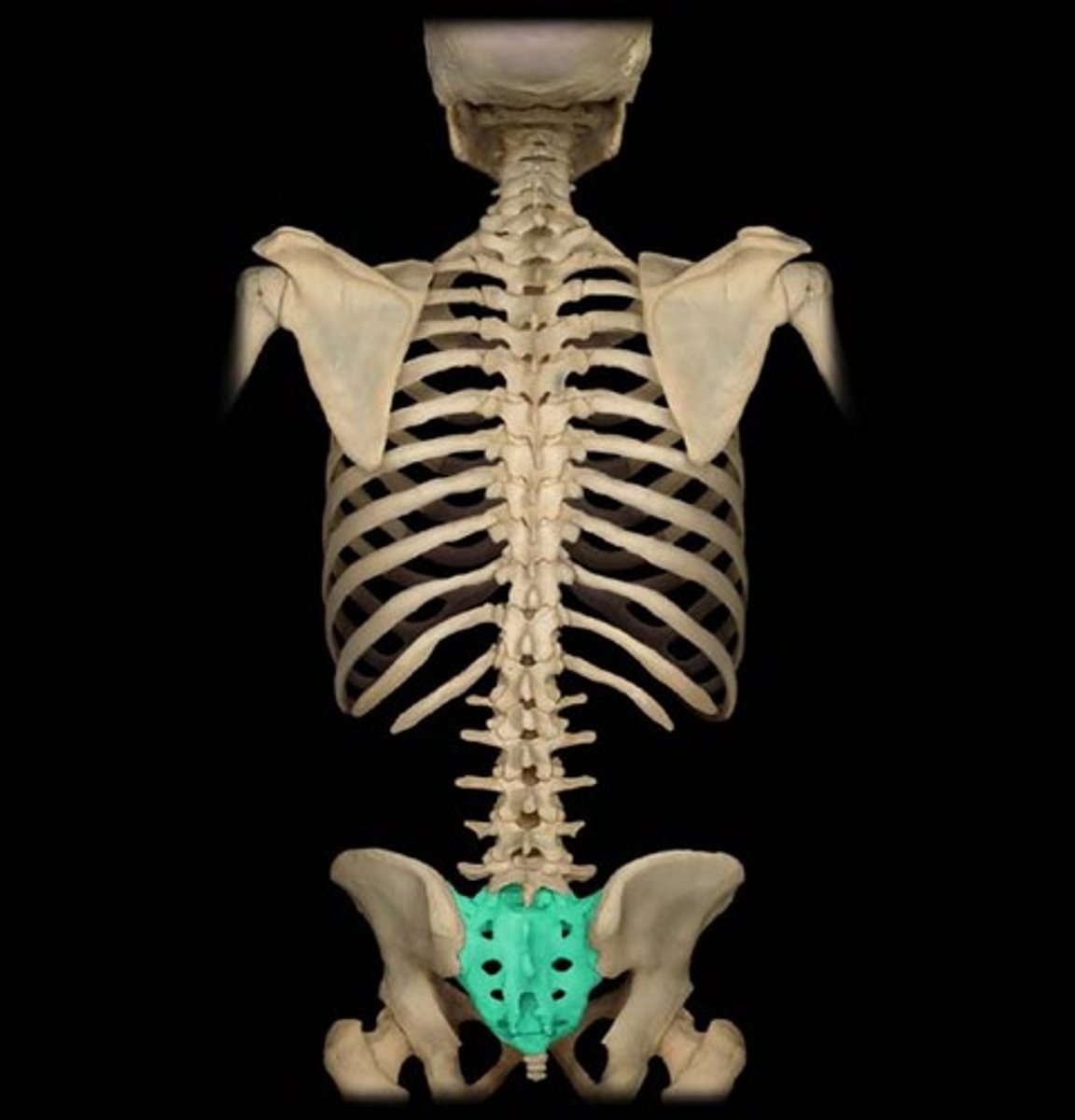
coccyx
What region of the spine is this?

abnormal lateral curvature of spine
What is scoliosis?
abnormal outward curvature of the spine
kyphosis (hunchback)
Abnormal inward curvature of the spine
lordosis
sternum
1. manubrium
- jugular notch
2. body
3. xiphoid process
What bone is this?

manubrium (sternum)
1. jugular notch
What bone is this?

jugular notch (manubrium)
What feature is this?
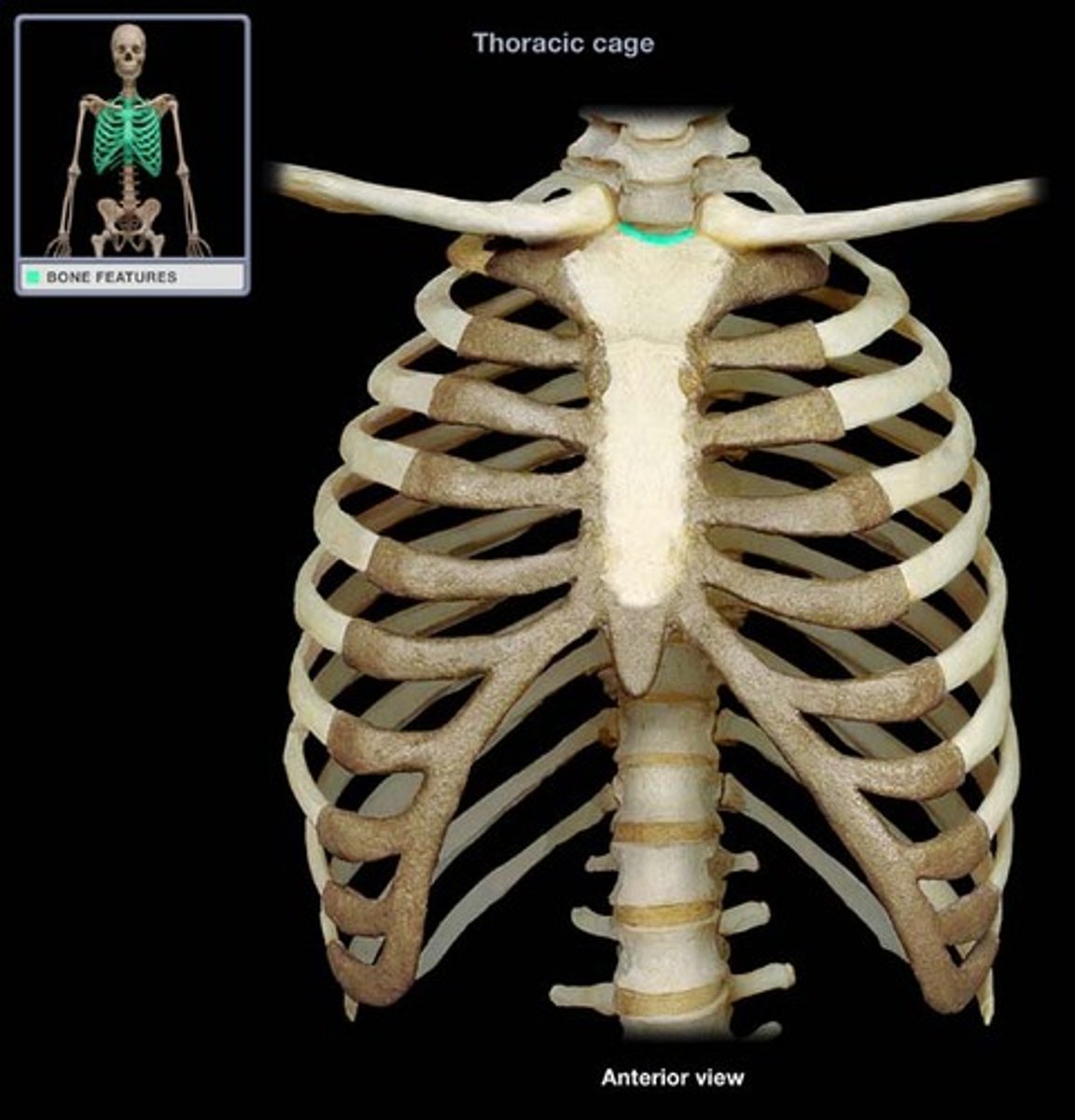
body of sternum
What bone is this?

xiphoid process (sternum)
What bone is this?

manubrium, body, and xiphoid process
What 3 bones fused together to make the sternum?
ribs
What bones are these?

12
How many pairs of ribs are there?
clavicle and scapula
What 2 bones make up the pectoral girdle?

clavicle
What bone is this?

scapula
1. spine
2. acromion
3. coracoid process
4. glenoid cavity
5. supraspinous fossa
6. infraspinous fossa
7. subscapular fossa
What bone is this?
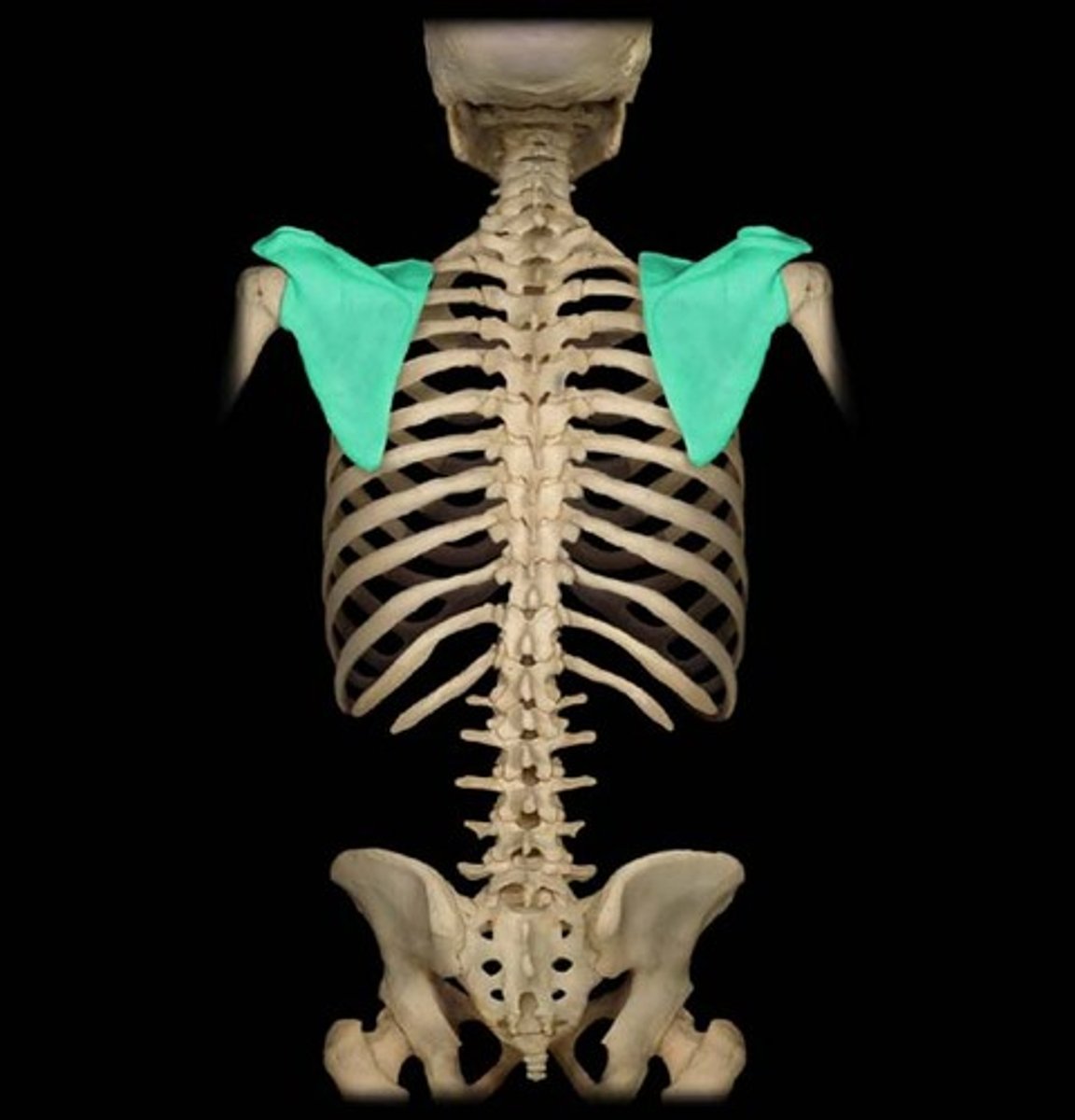
spine of scapula
What structure is this?
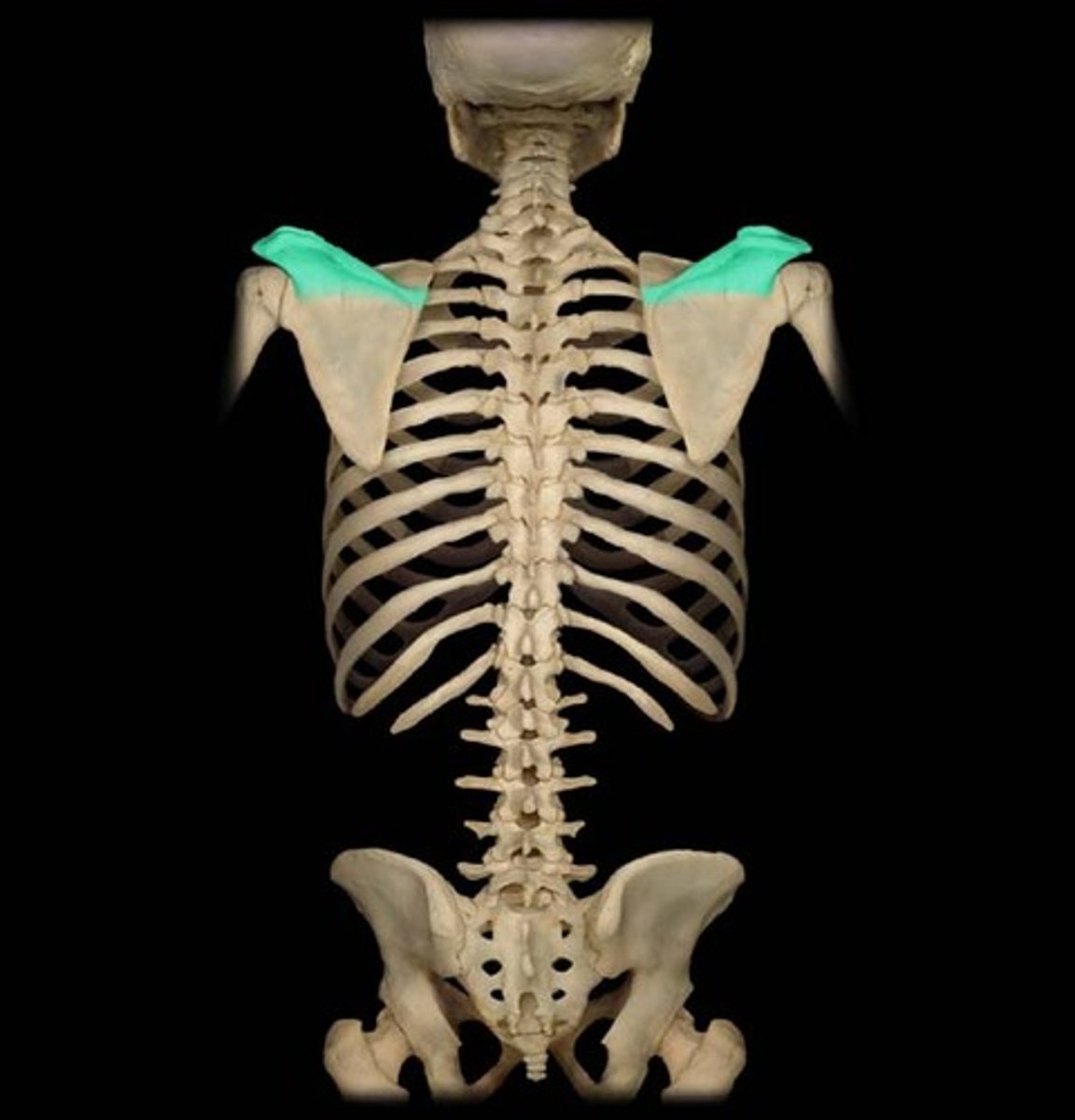
acromion of scapula
What structure is this?

coracoid process of scapula
What structure is this?

glenoid cavity of scapula
What structure is this?

supraspinous fossa of scapula (posterior)
What structure is this?
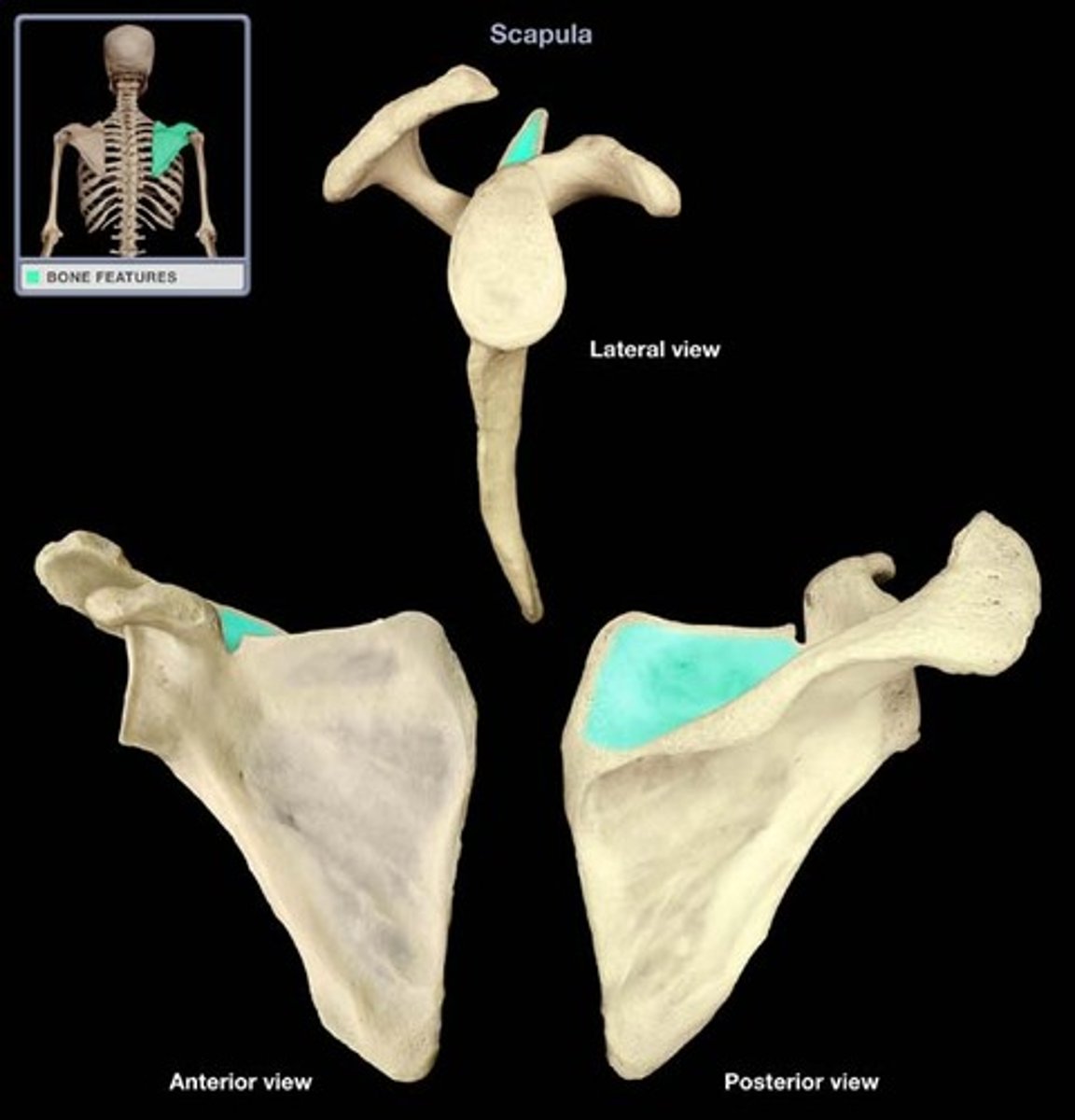
infraspinous fossa of scapula (posterior)
What structure is this?
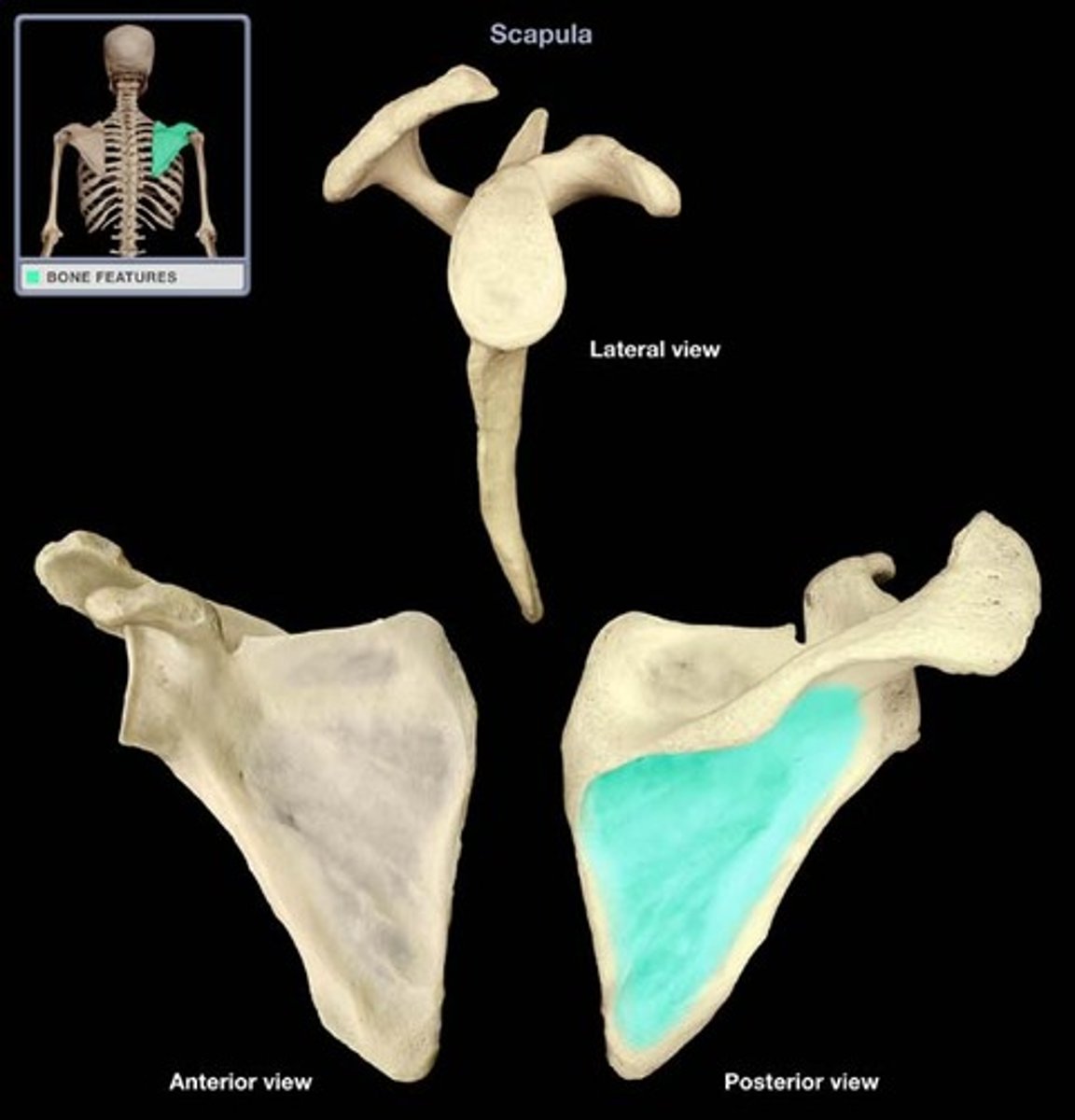
subscapular fossa of scapula (anterior)
What structure is this?
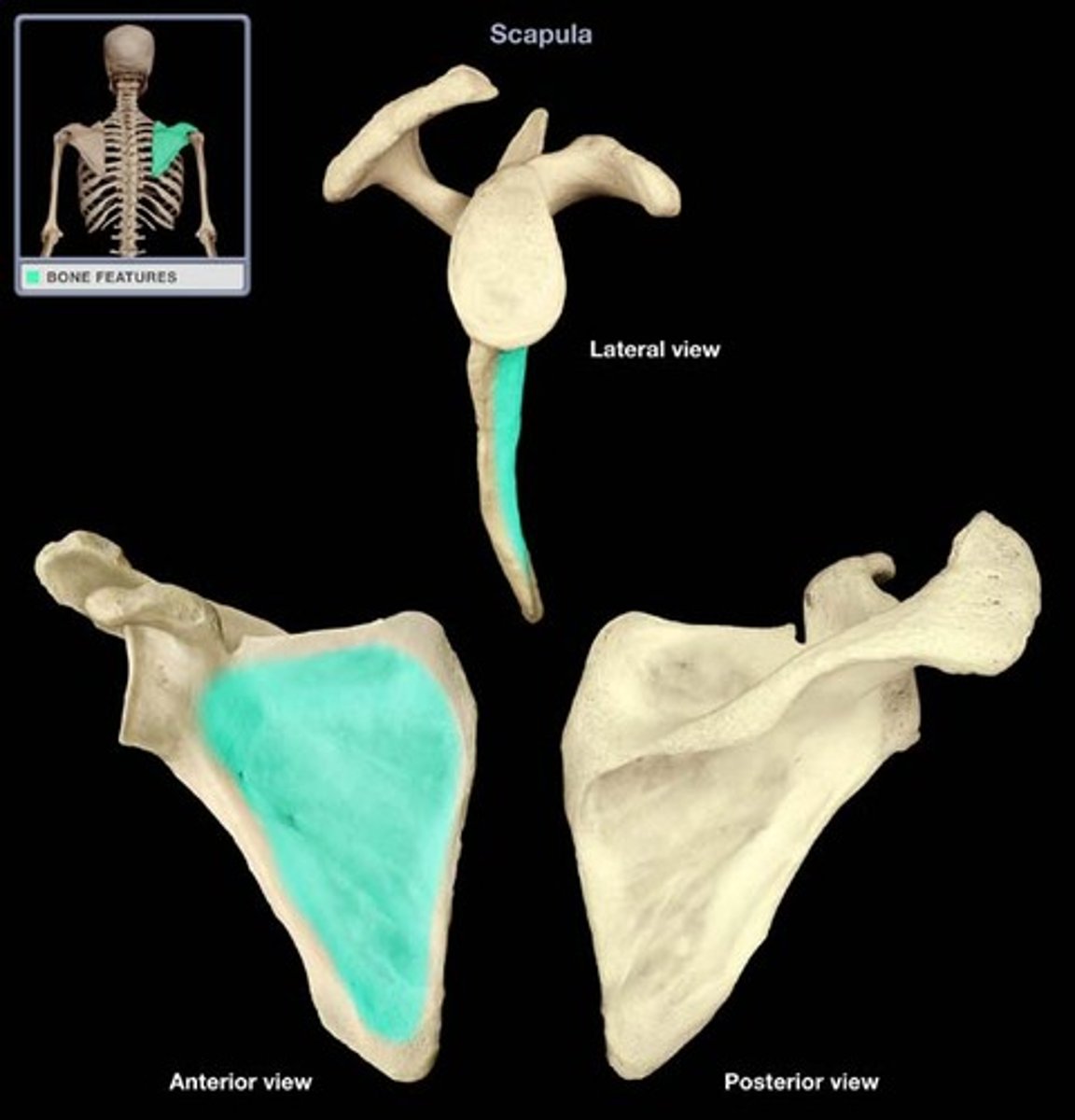
humerus
- articulates with the scapula superiorly at the shoulder and at the elbow inferiorly
1. head of humerus
2. greater tubercle
4. lesser tubercule
5. intertubercular groove
6. deltoid tuberosity
7. trochlea
8. capitulum
9. medial epicondyle
10. lateral epicondyle
11. coronoid fossa
12. olecranon fossa
What bone is this?

head of humerus
What feature is this?

greater tubercle of humerus
What feature is this?
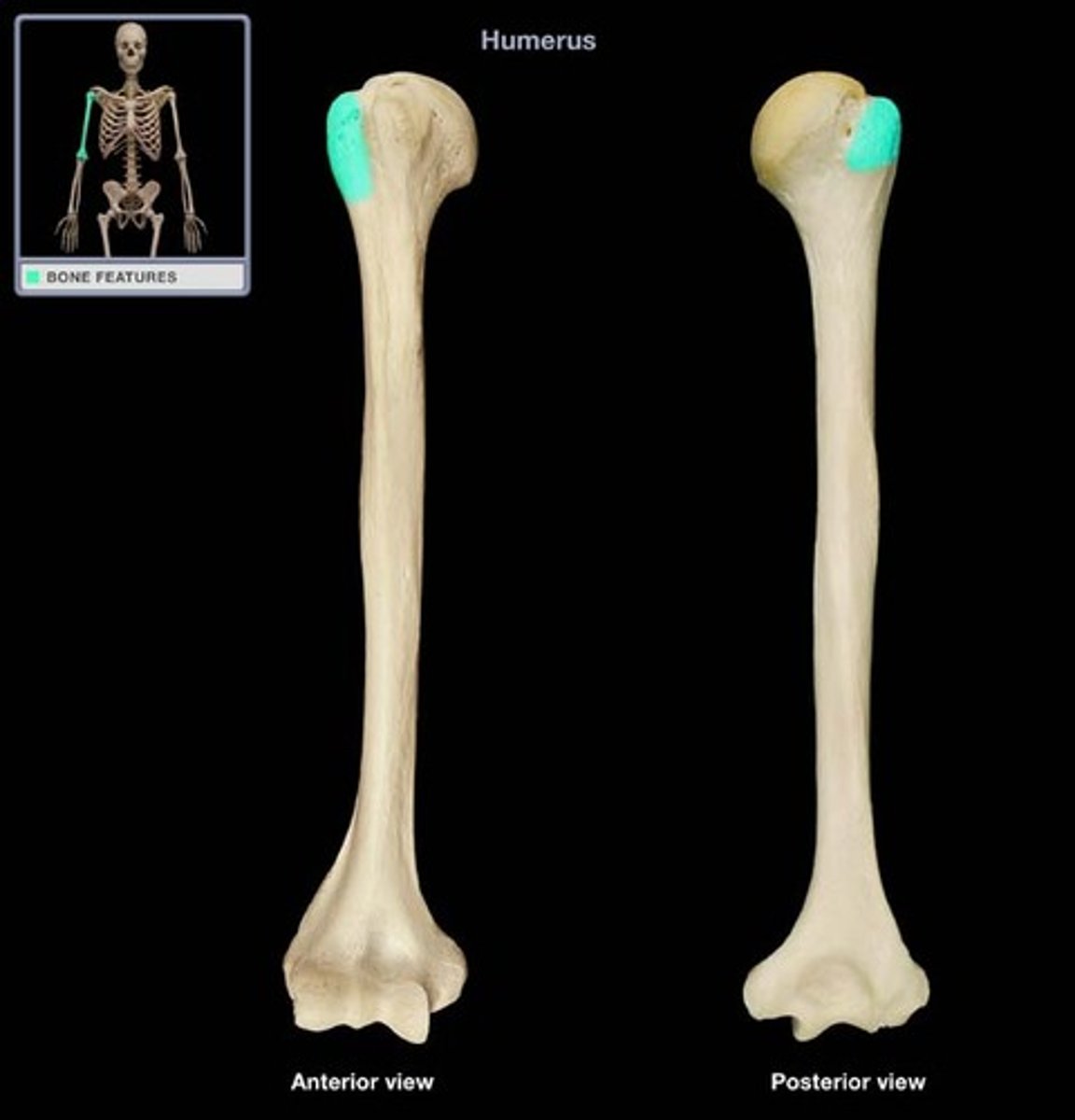
lesser tubercle of humerus (anterior)
What feature is this?
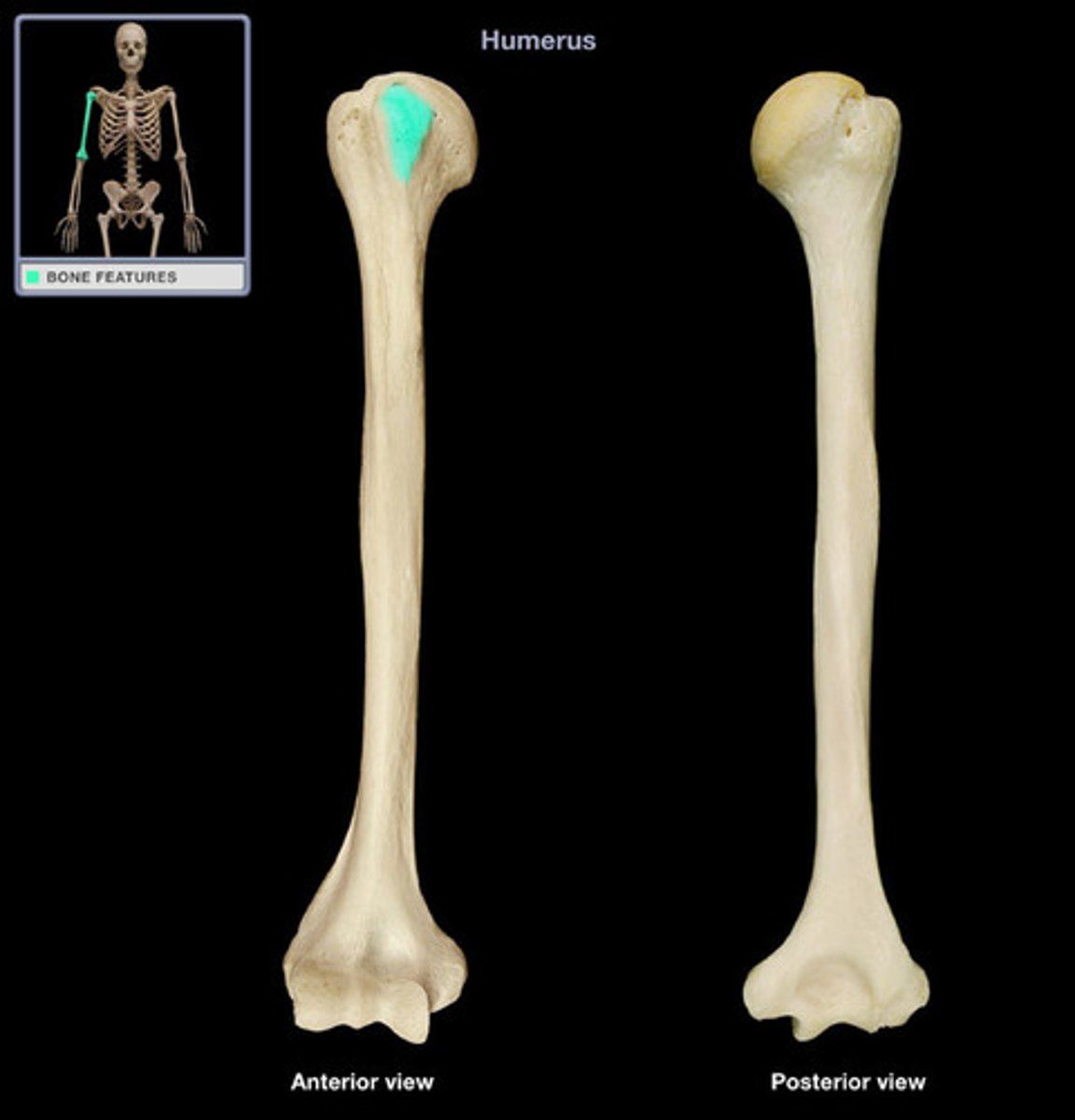
intertubercular groove of humerus
What feature is this?
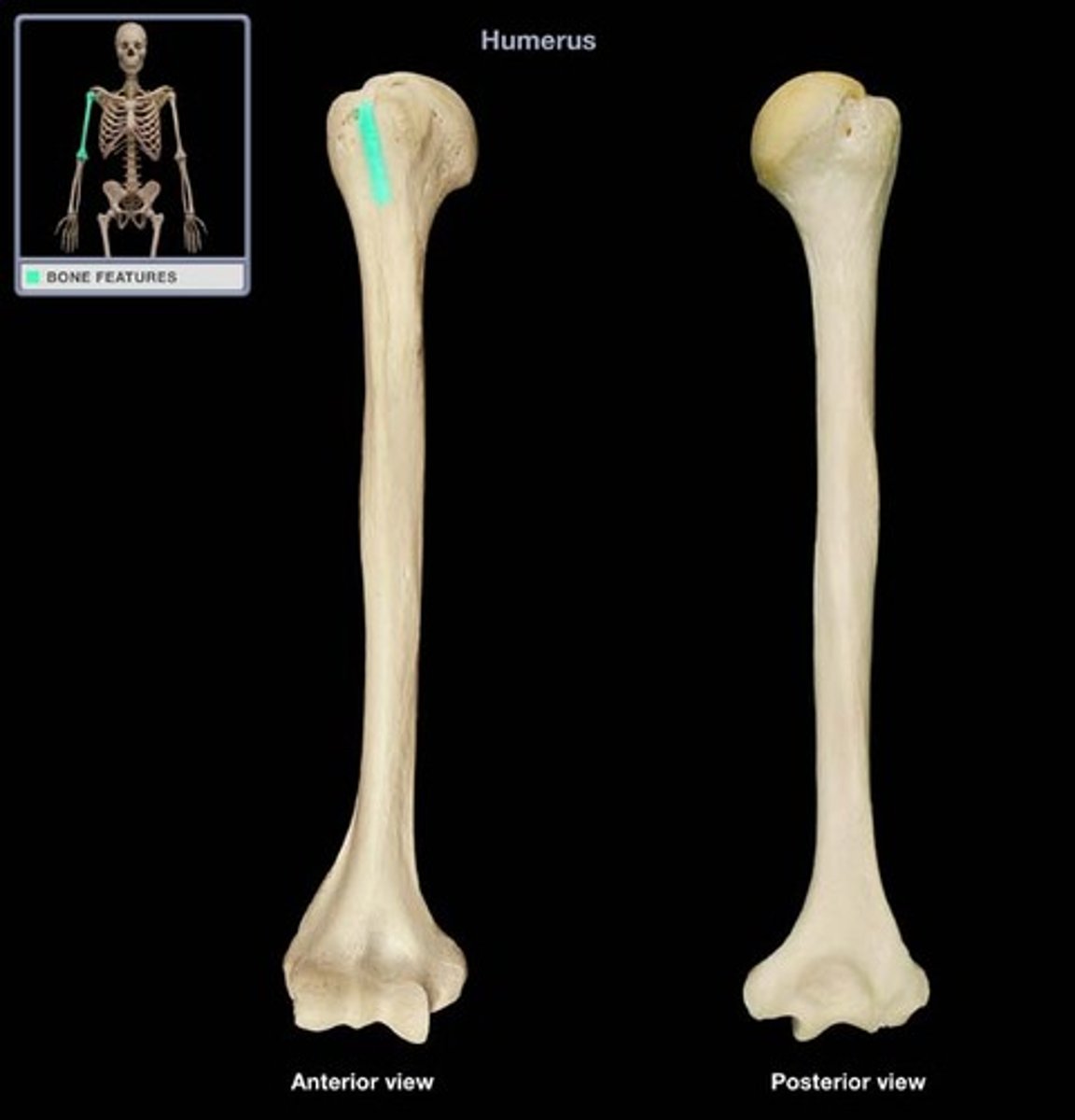
deltoid tuberosity of humerus (lateral)
What feature is this?
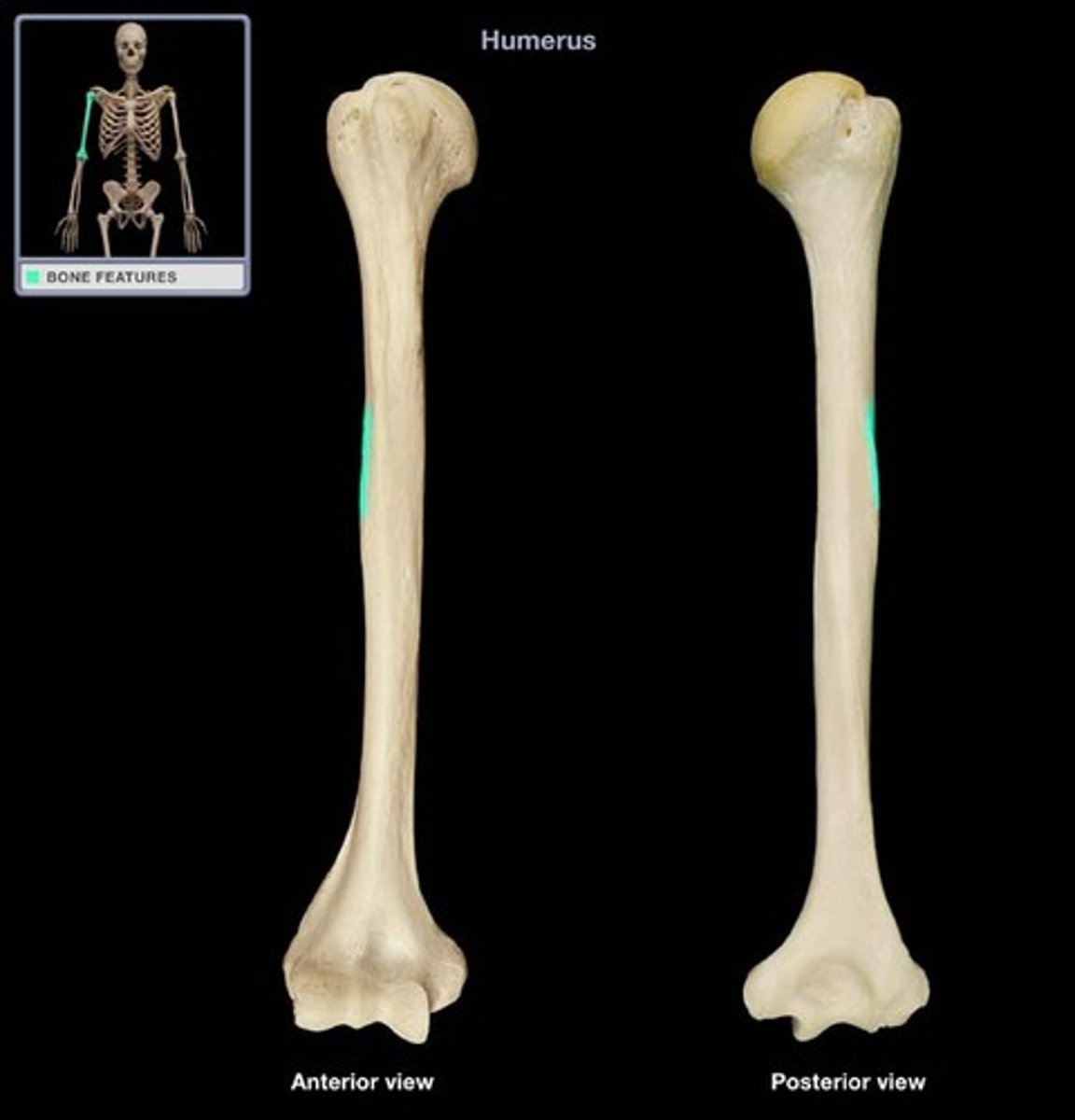
trochlea of humerus
- medial articulation with the ulna
What feature is this?
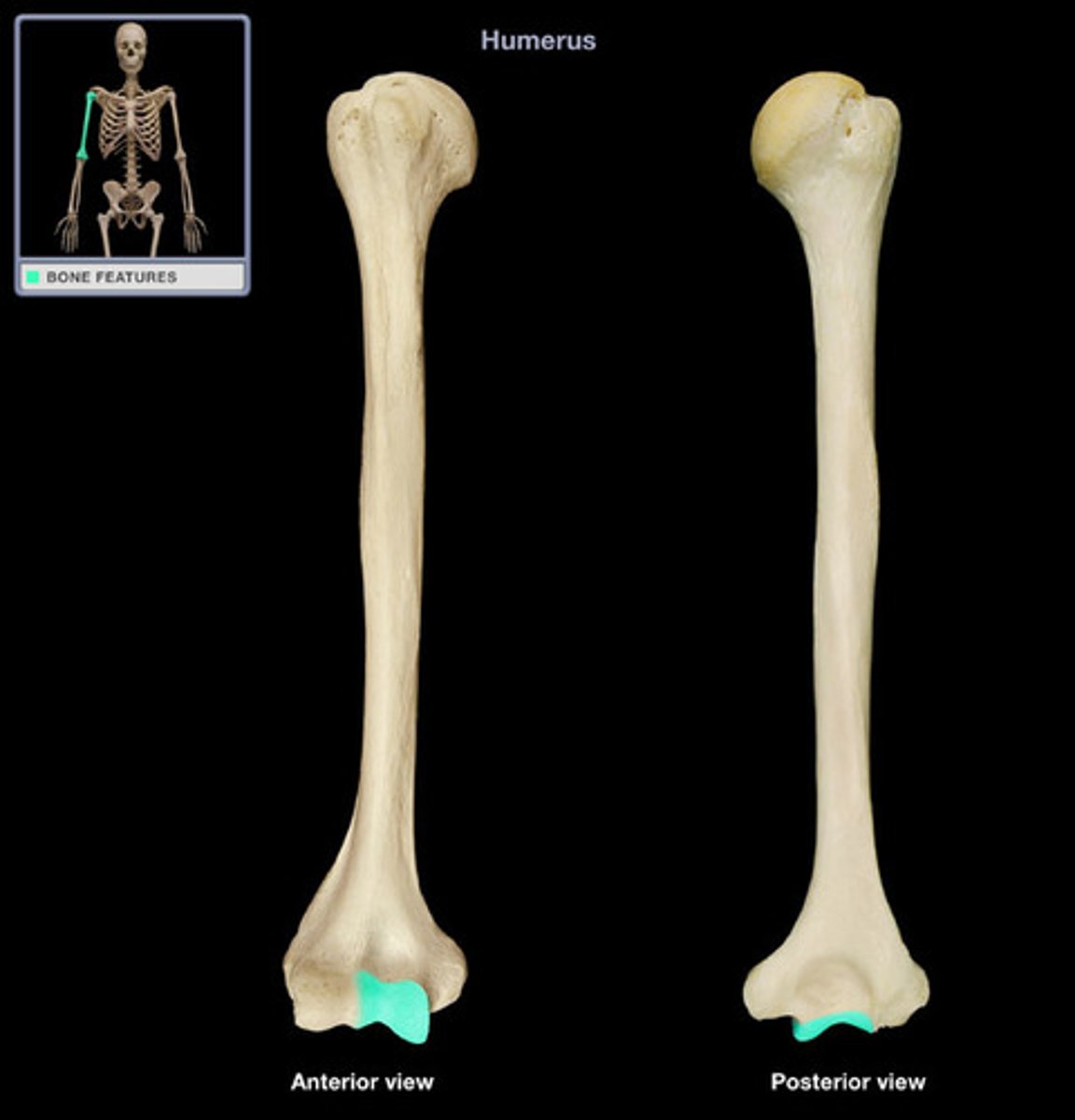
medial articulation with the ulna
What does the trochlea of the humerus do?
capitulum of humerus
What feature is this?
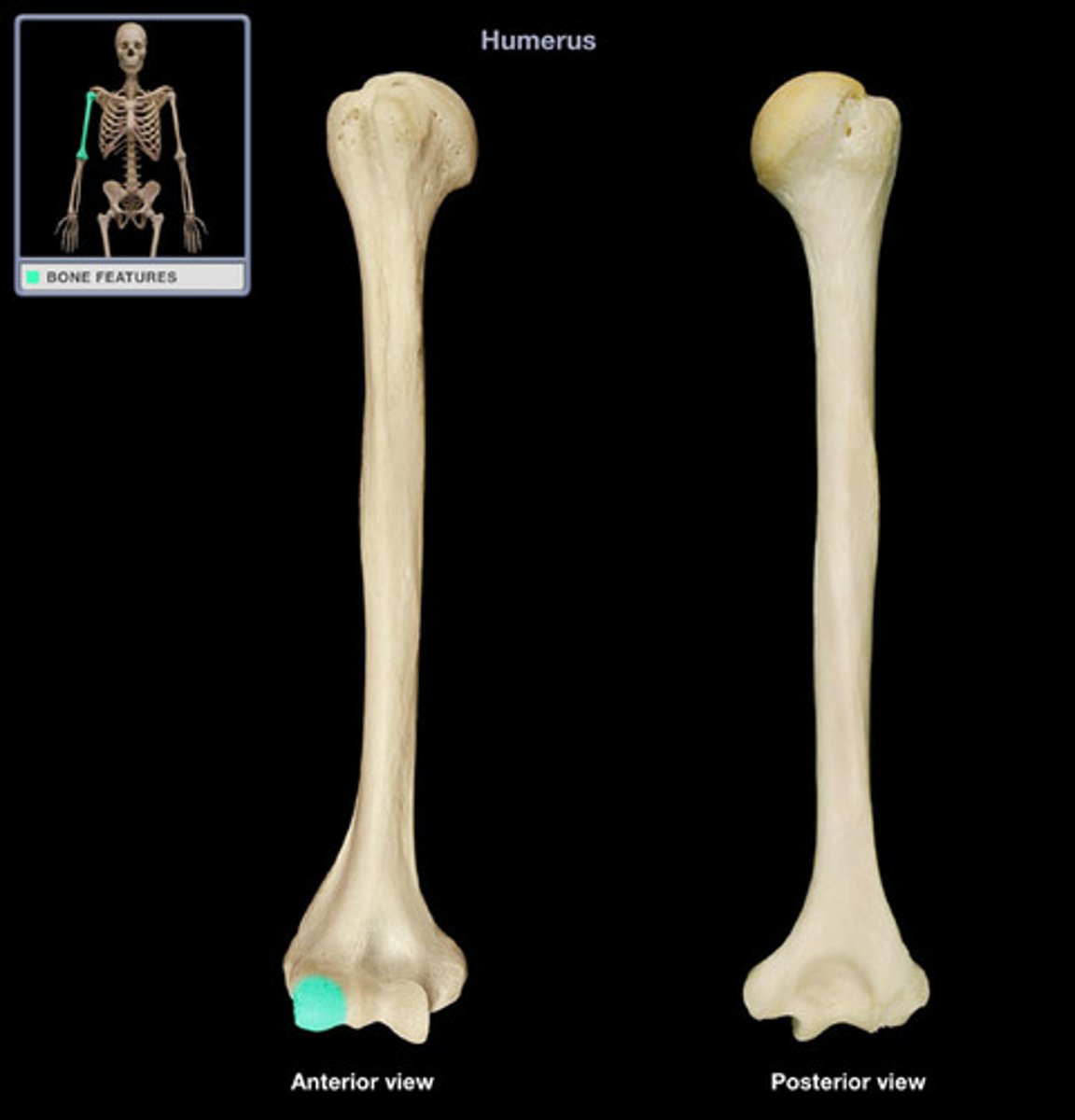
medial epicondyle of humerus
What feature is this?

lateral epicondyle of humerus
What feature is this?
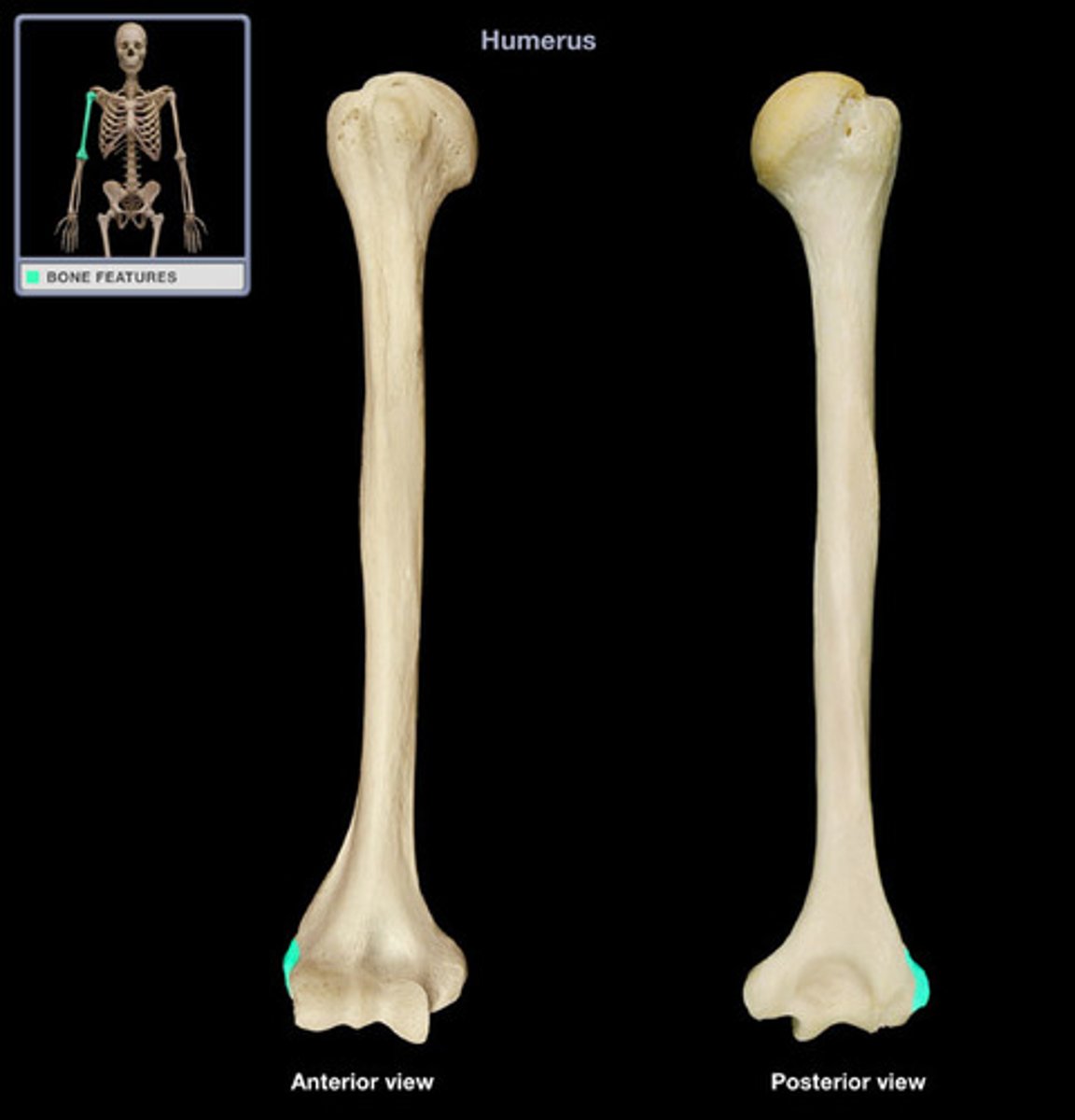
coronoid fossa of humerus (anterior)
What feature is this?
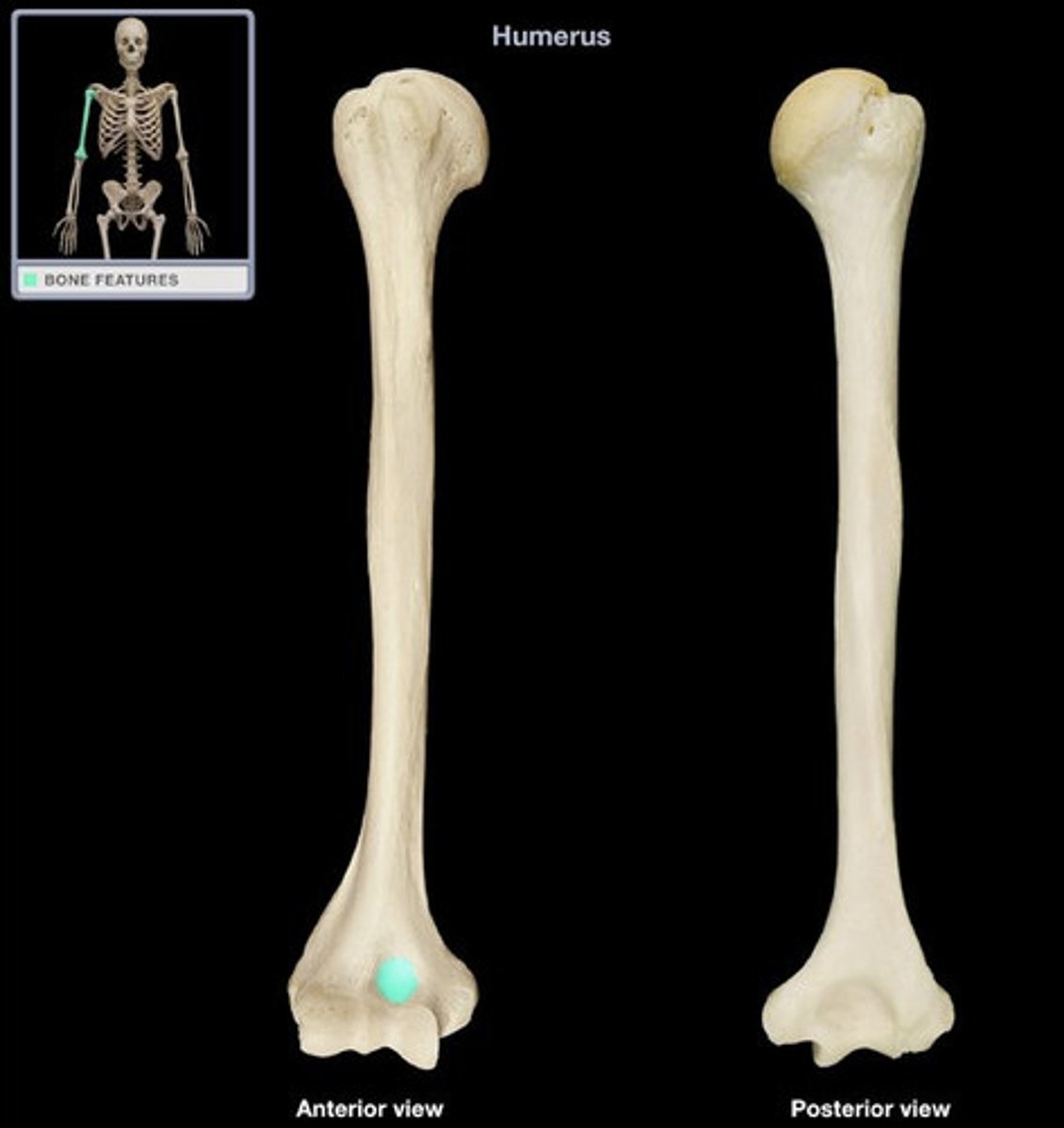
olecranon fossa of humerus
What feature is this?
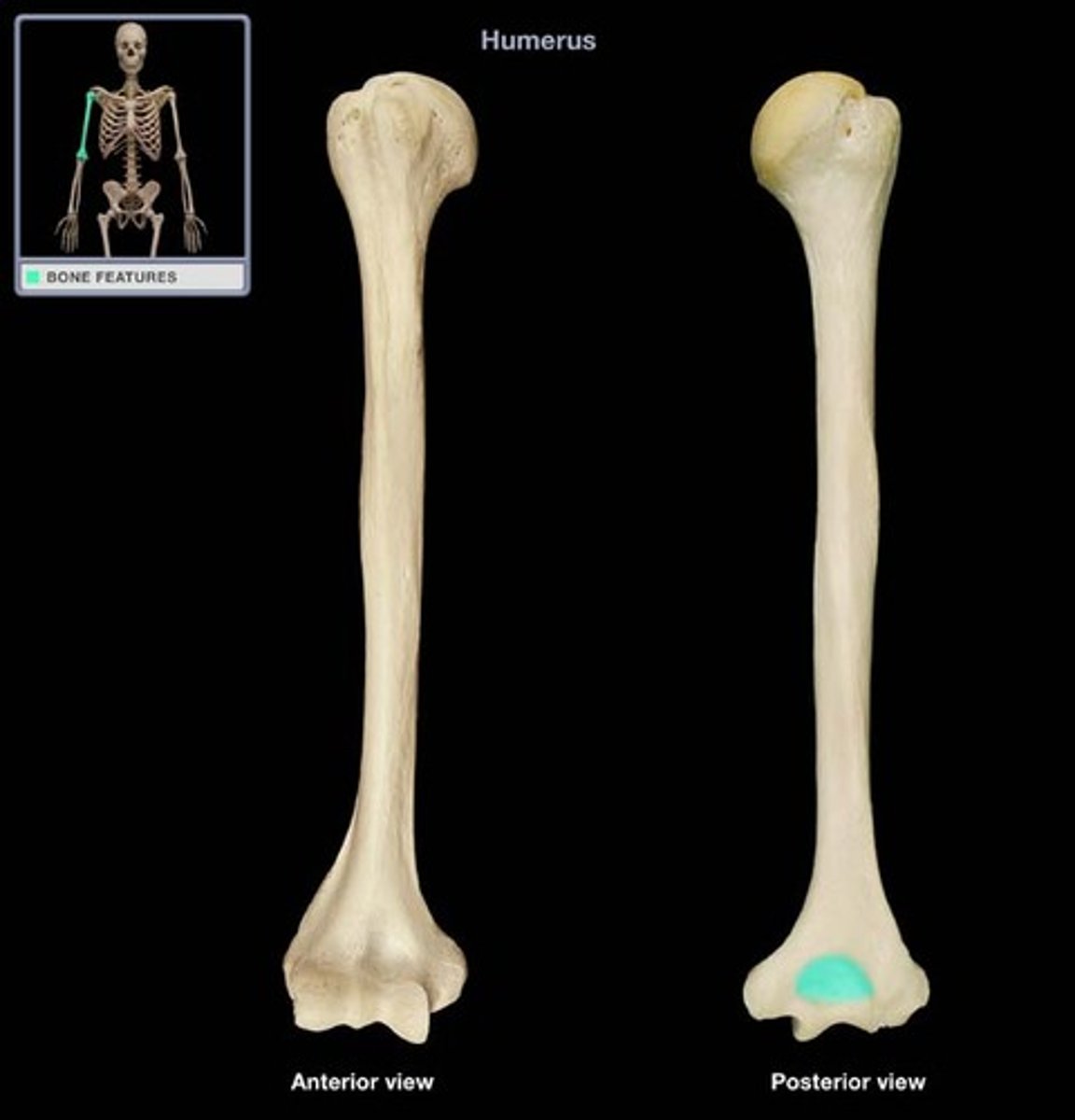
radius and ulna
What 2 bones make up the forearm?
radius is lateral
ulna is medial
Match radius and ulna with lateral and medial
Ulna
1. coronoid process
2. olecranon process
(fit into the coronoid and olecranon fossae on the humerus)
3. trochlear notch
(encompasses trochlea of humerus)
4. radial notch
(where radius "spins" in ulna to allow supination and pronation)
5. styloid process
What bone is this?

coronoid process of ulna
What feature is this?
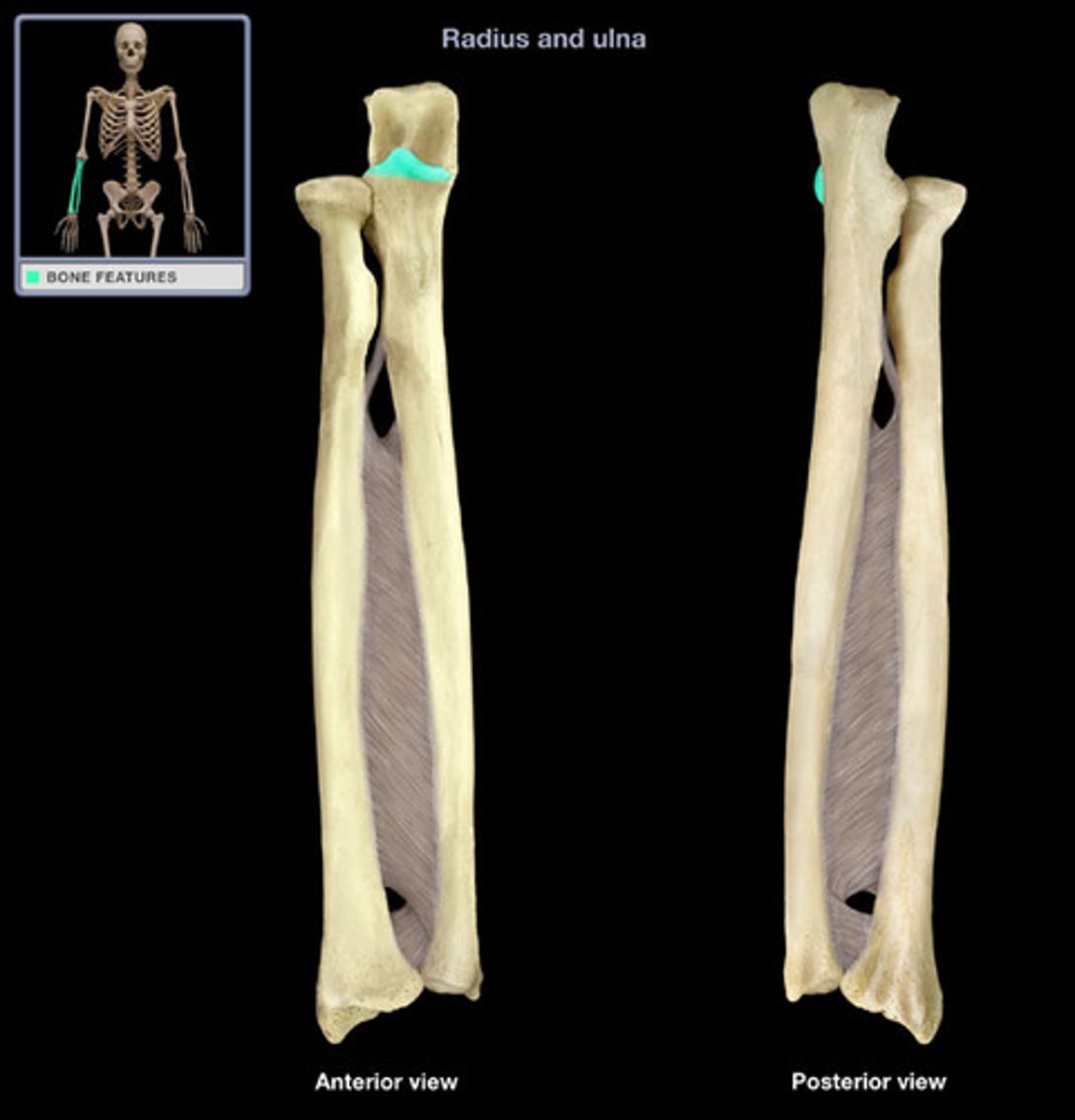
olecranon process of ulna
What feature is this?

coronoid and olecranon fossae of humerus
What do the coronoid and olecranon processes fit into?
trochlear notch of ulna
What feature is this?
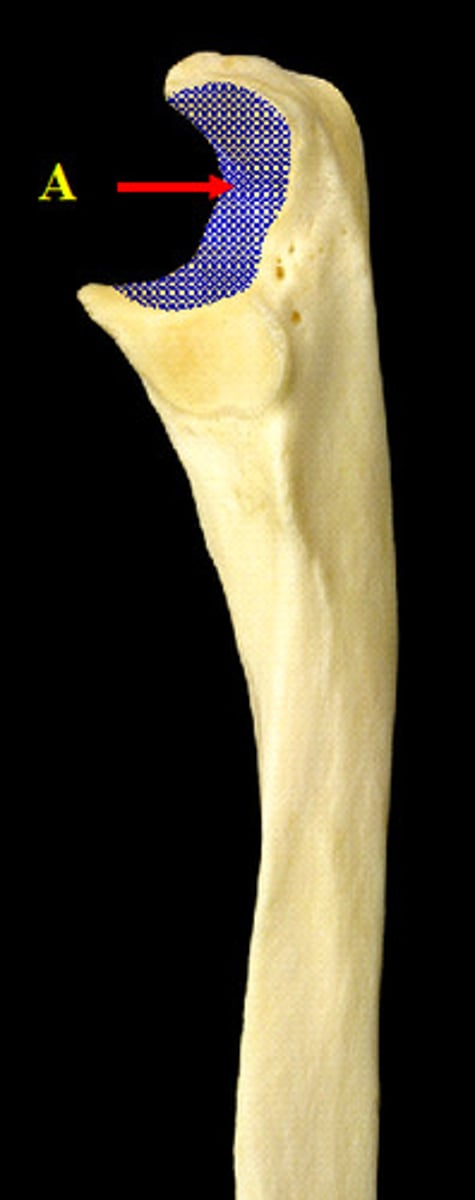
radial notch of ulna
What feature is this?
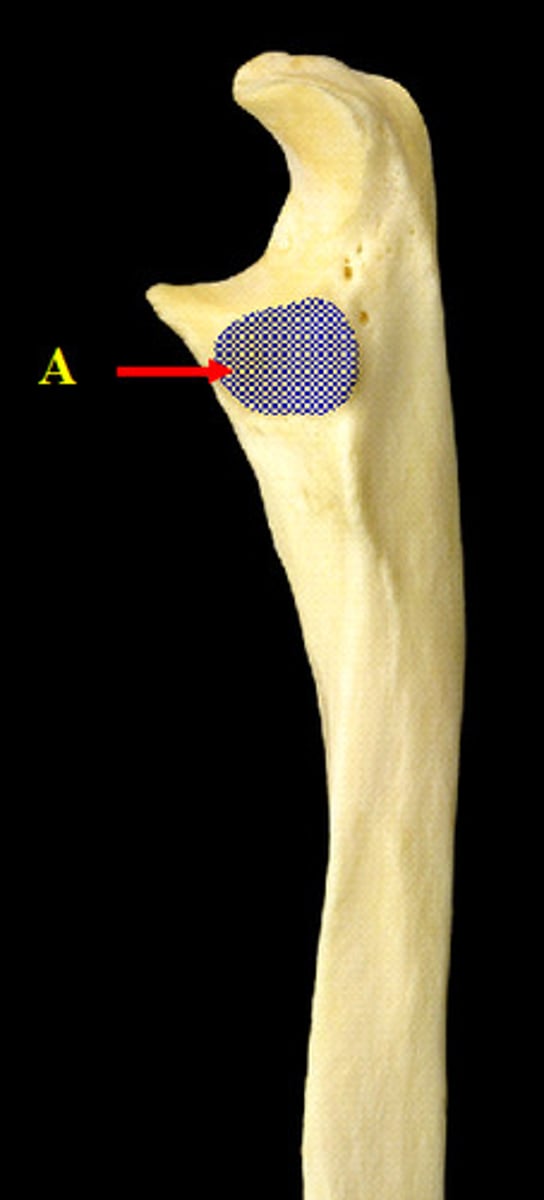
extension
What motion are the olecranon process and olecranon fossa used for?
flexion
What motion are the coronoid process and coronoid fossa used for?
Radius
1. head
2. radial tuberosity
3. styloid process
What bone is this?
